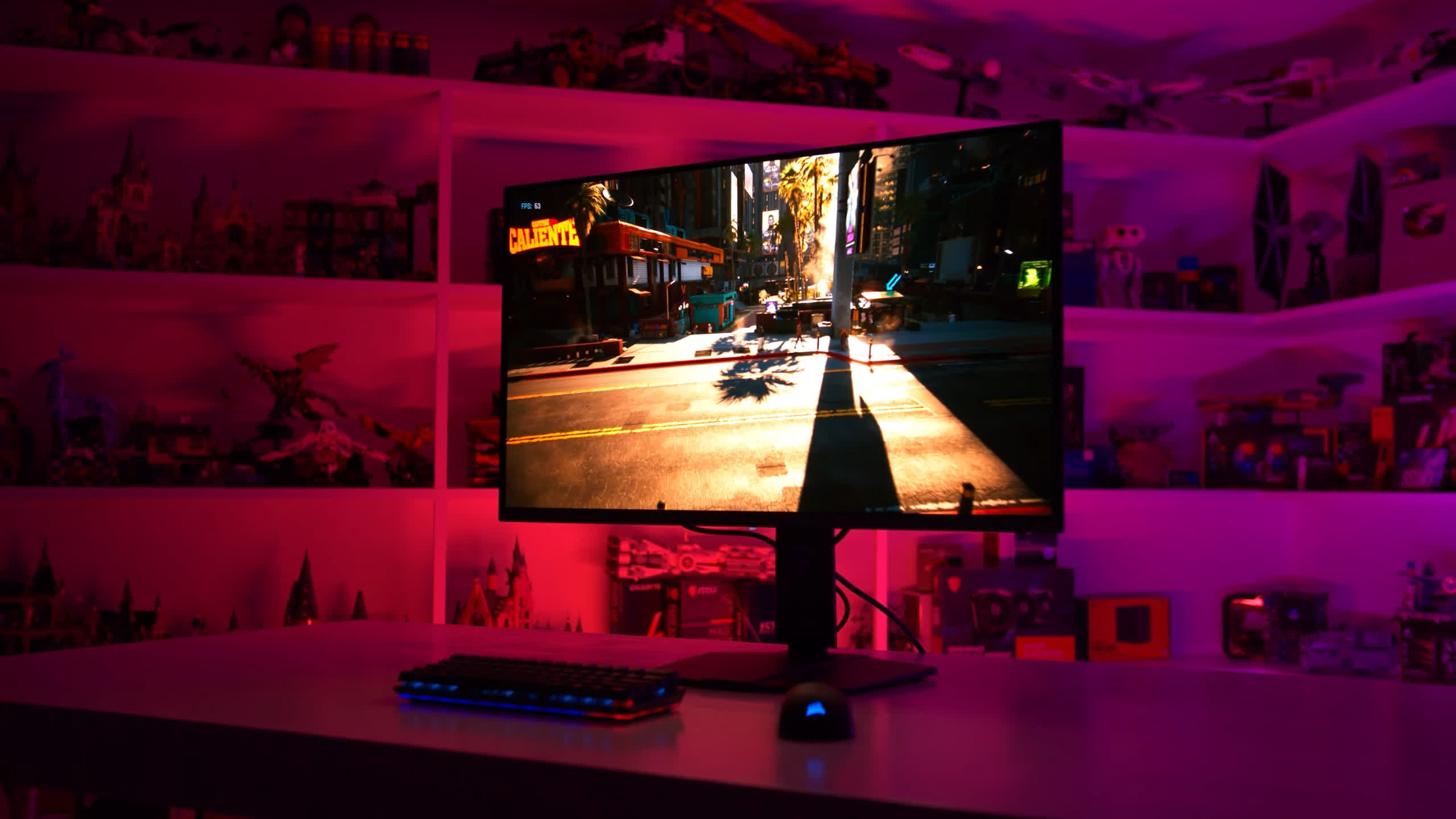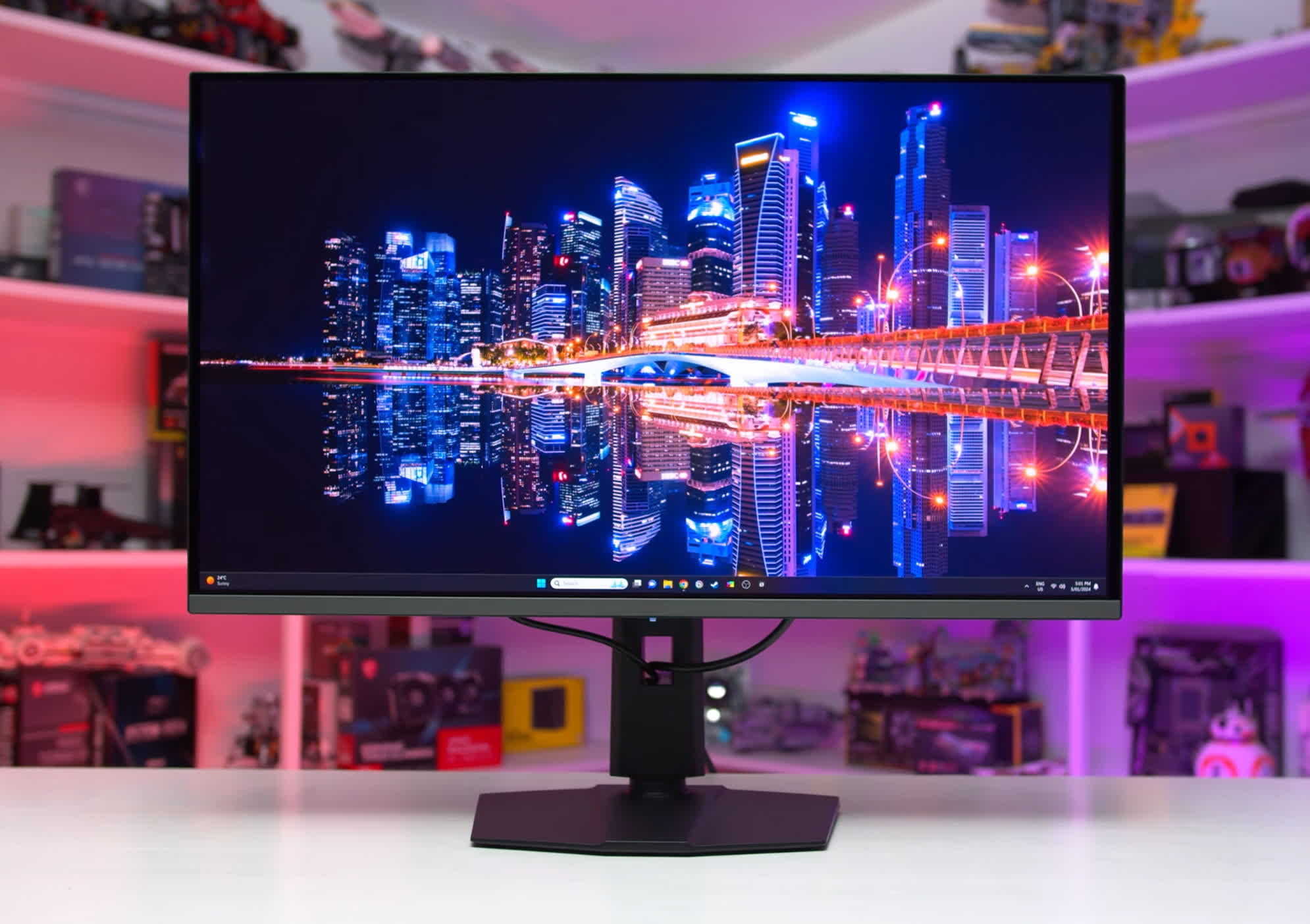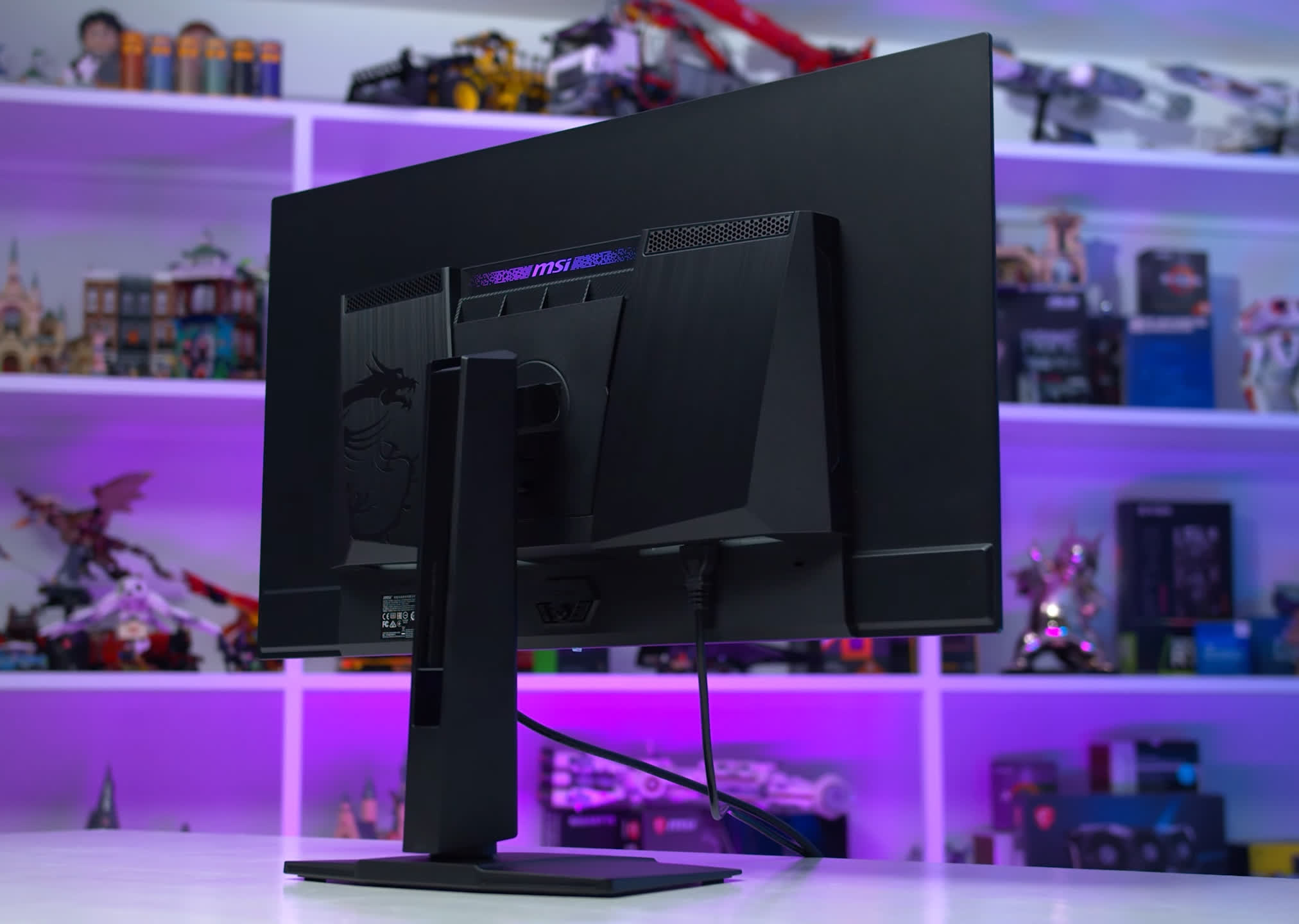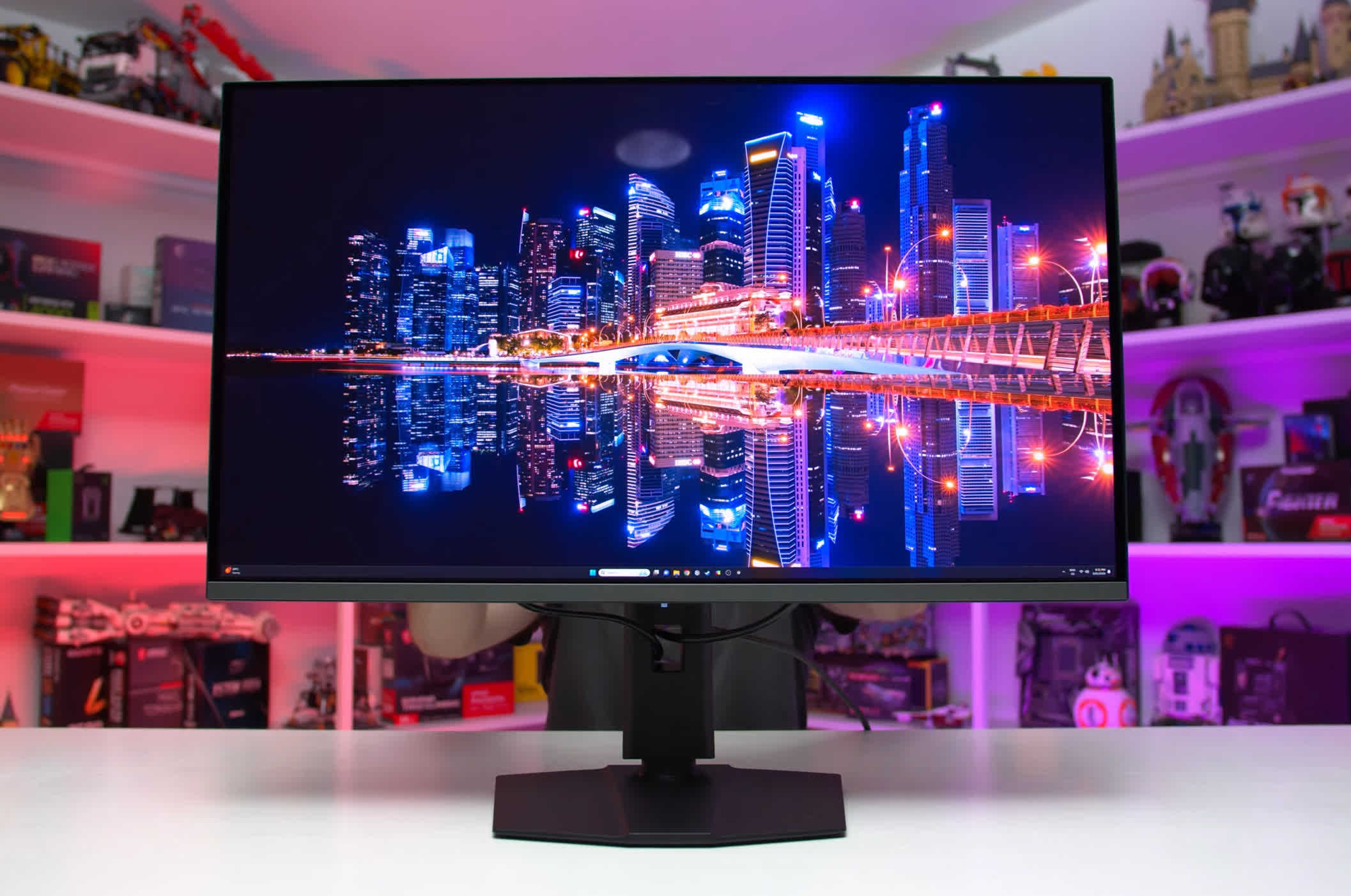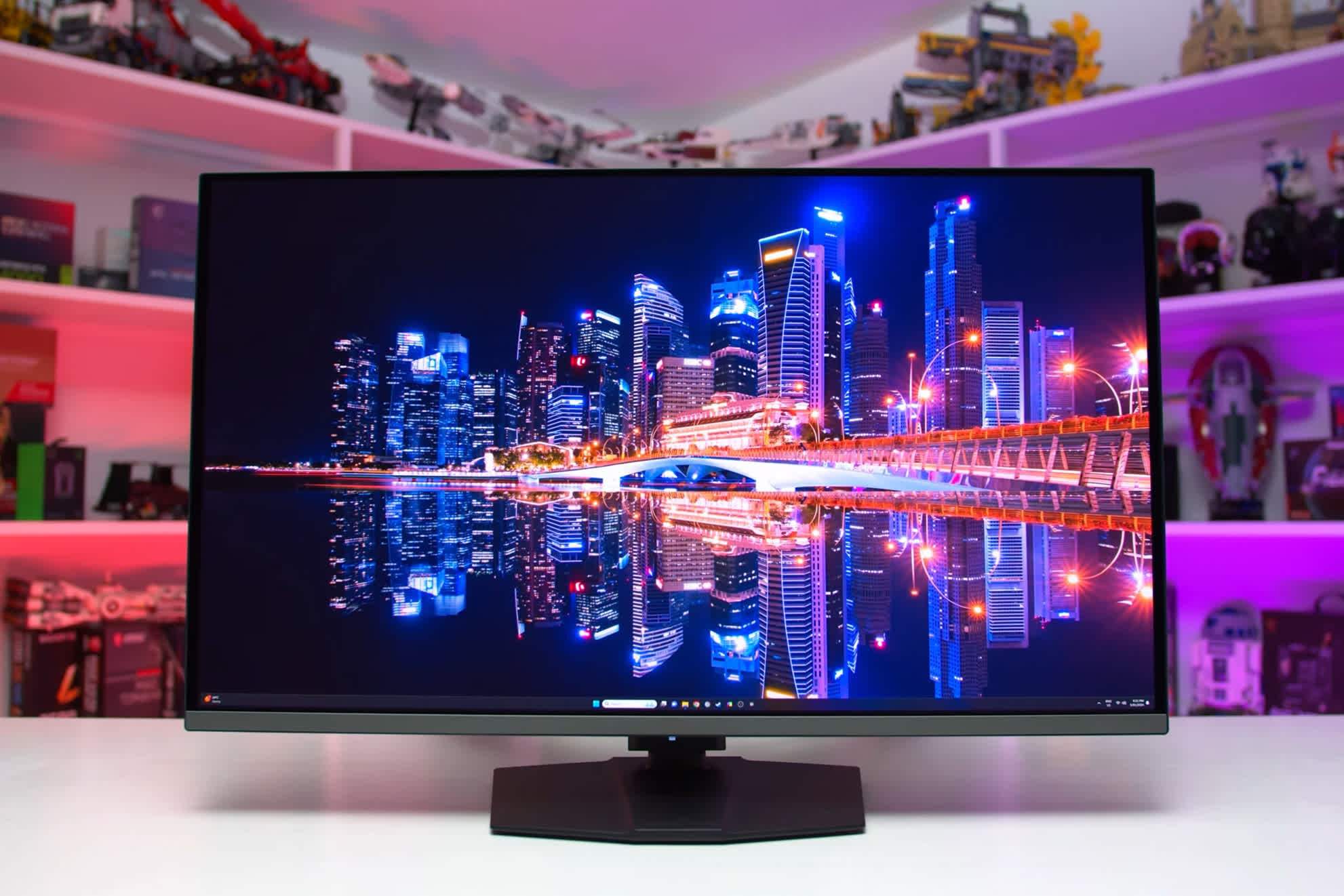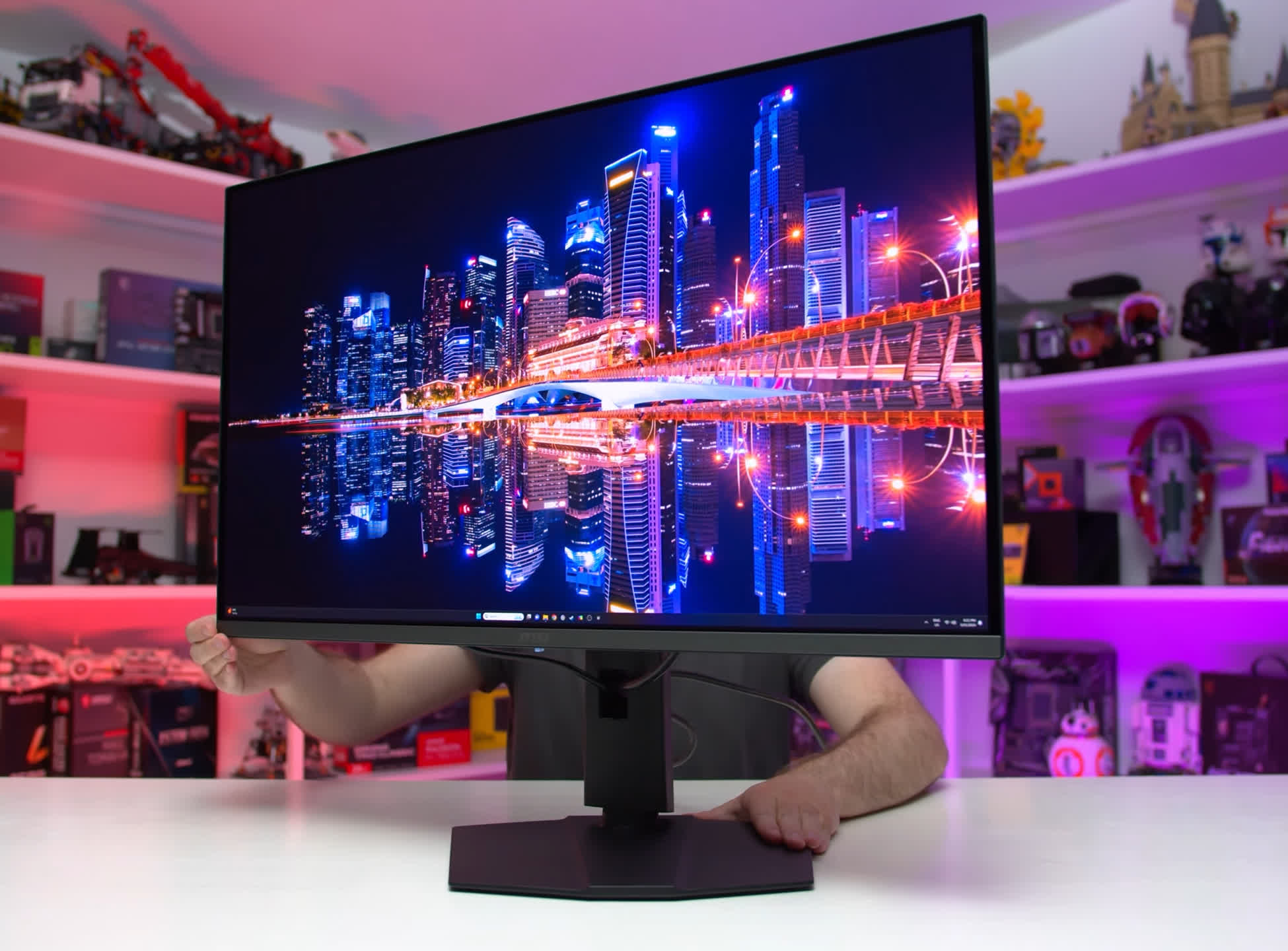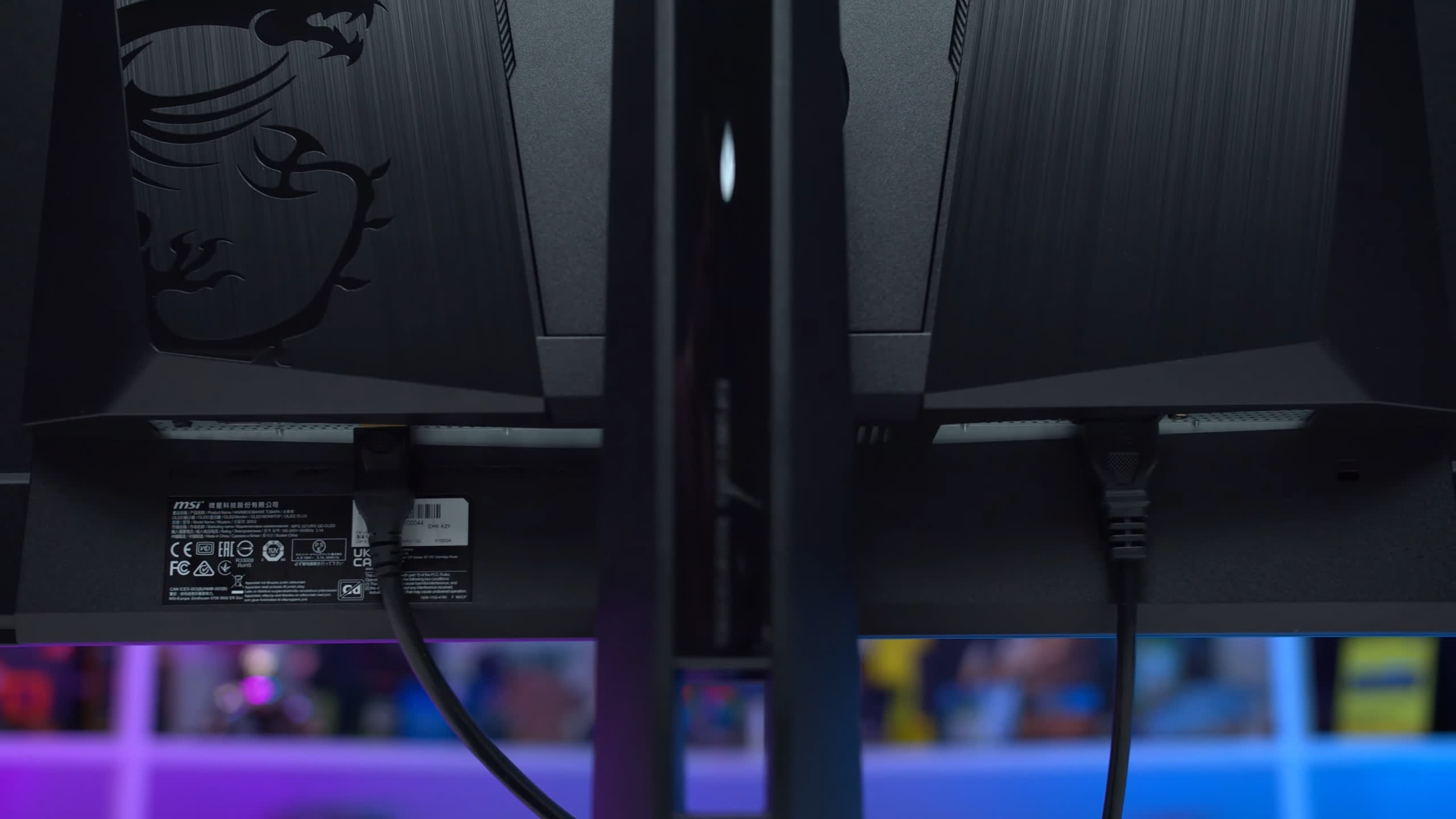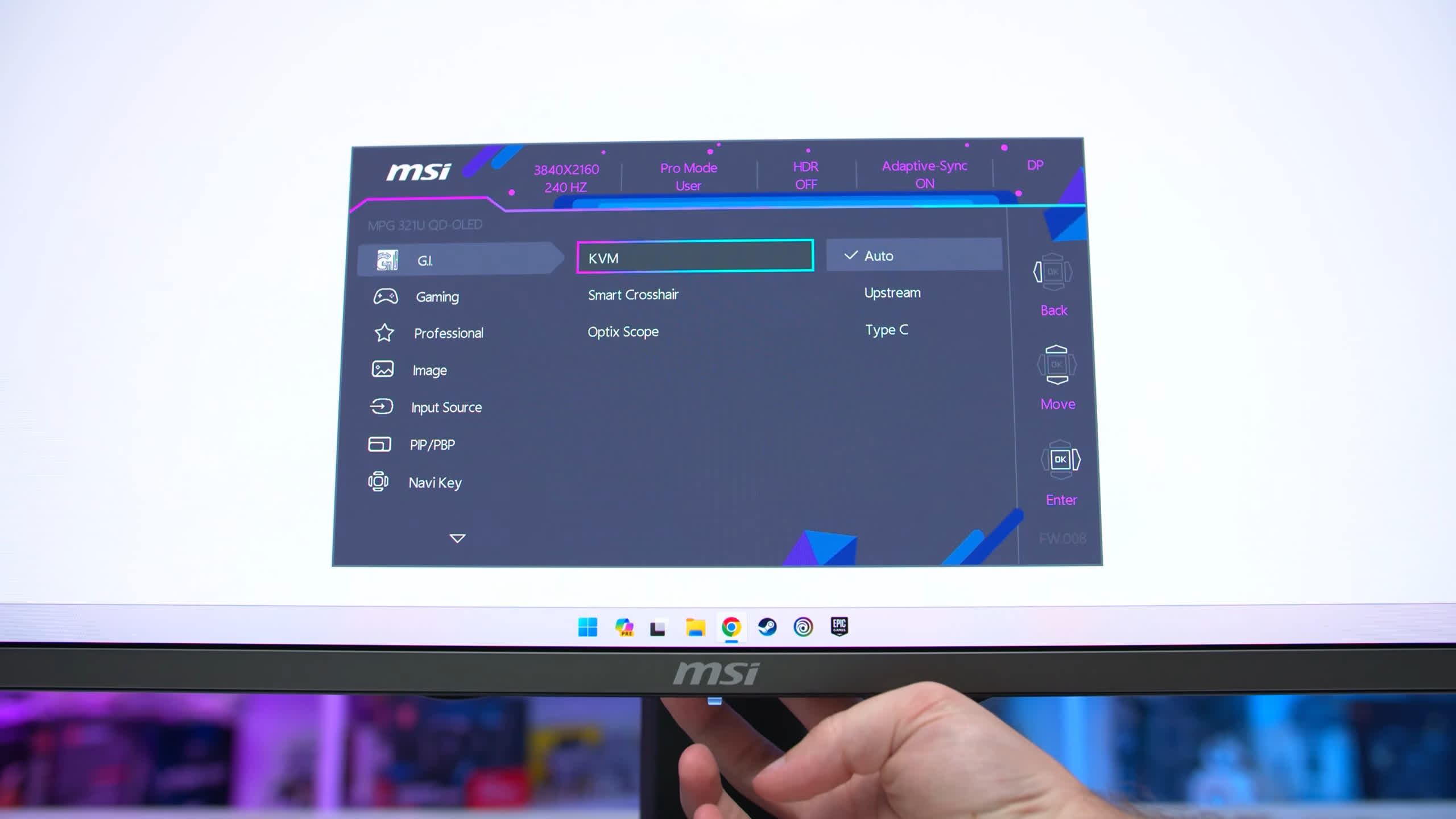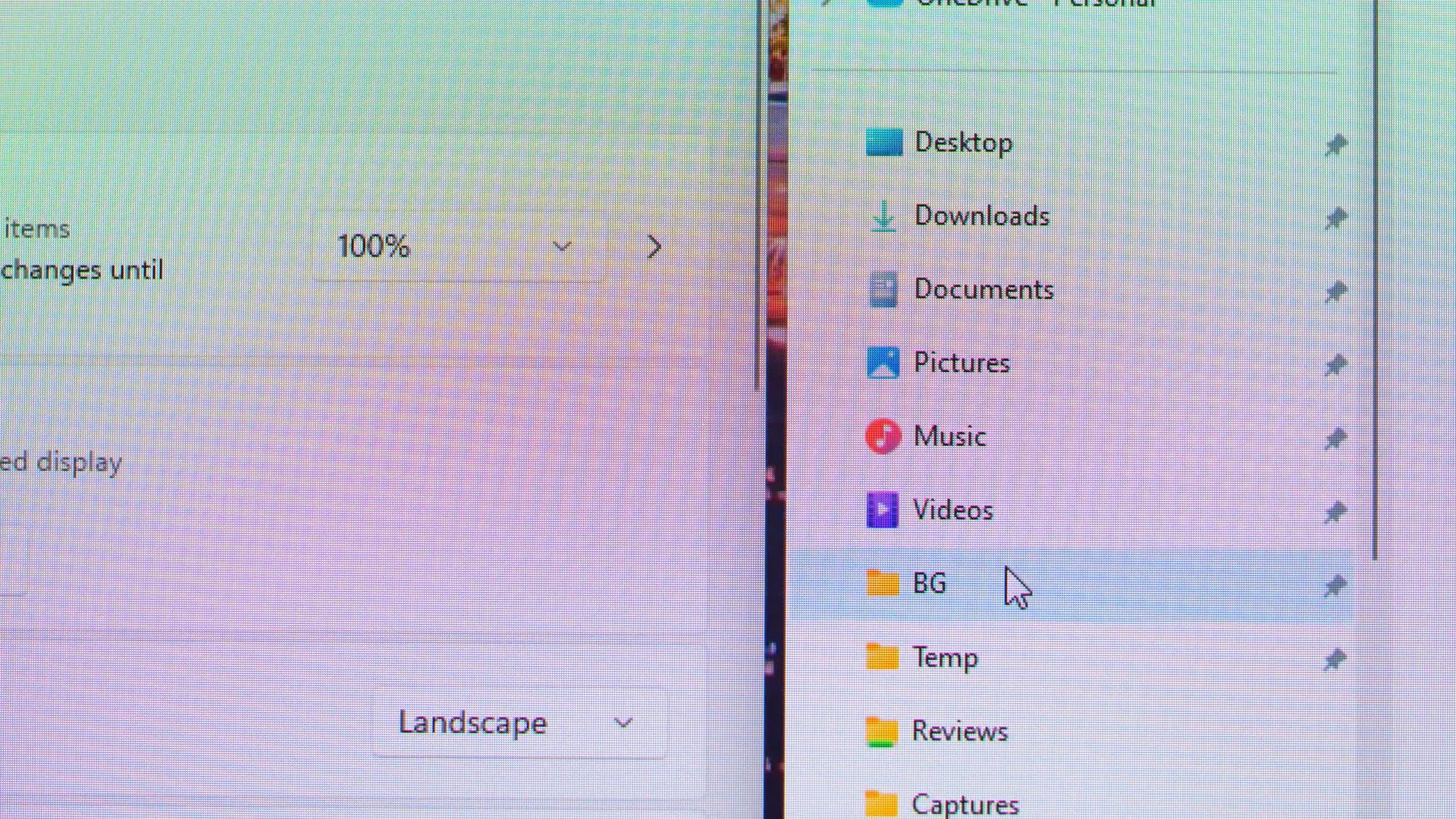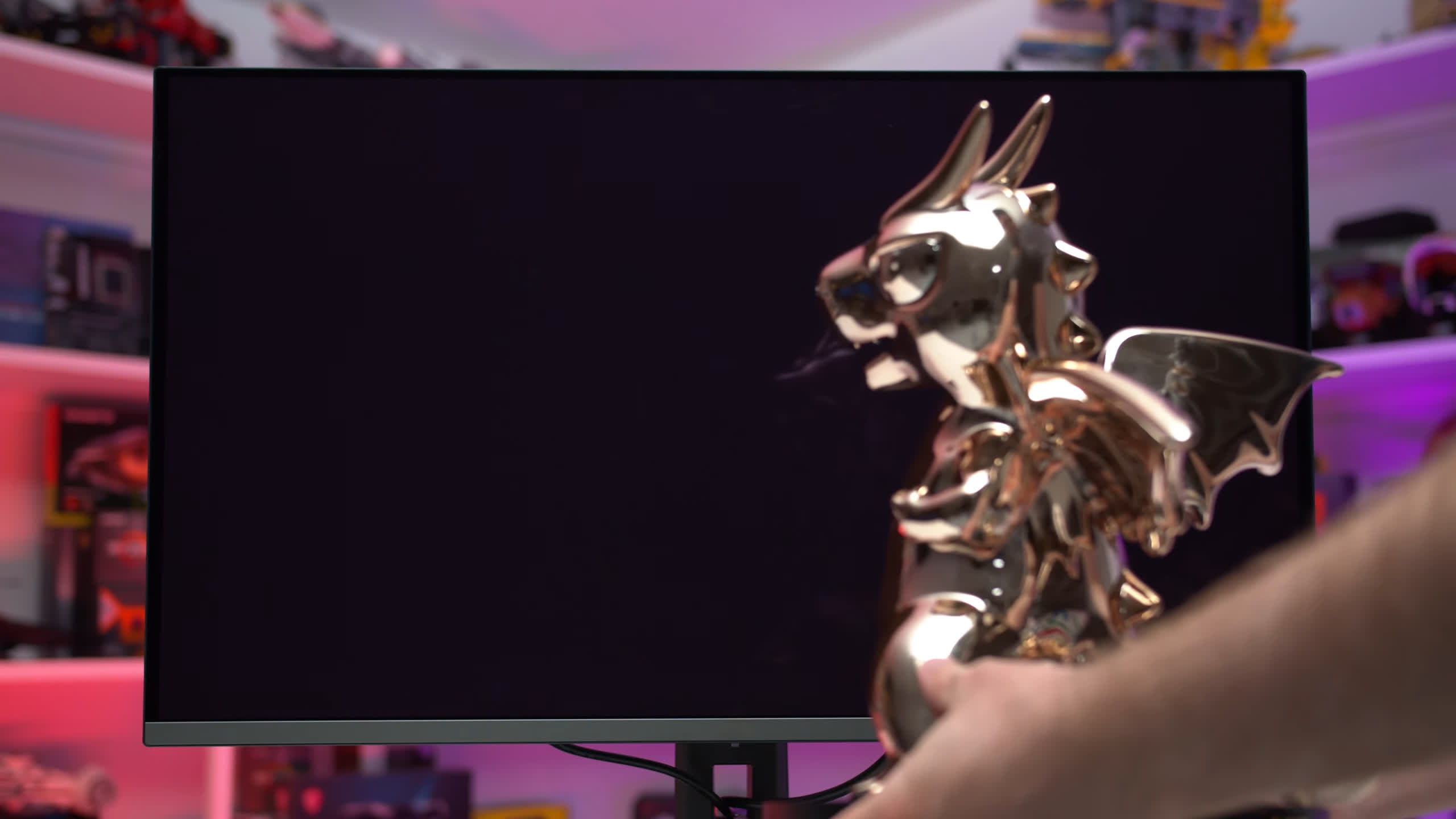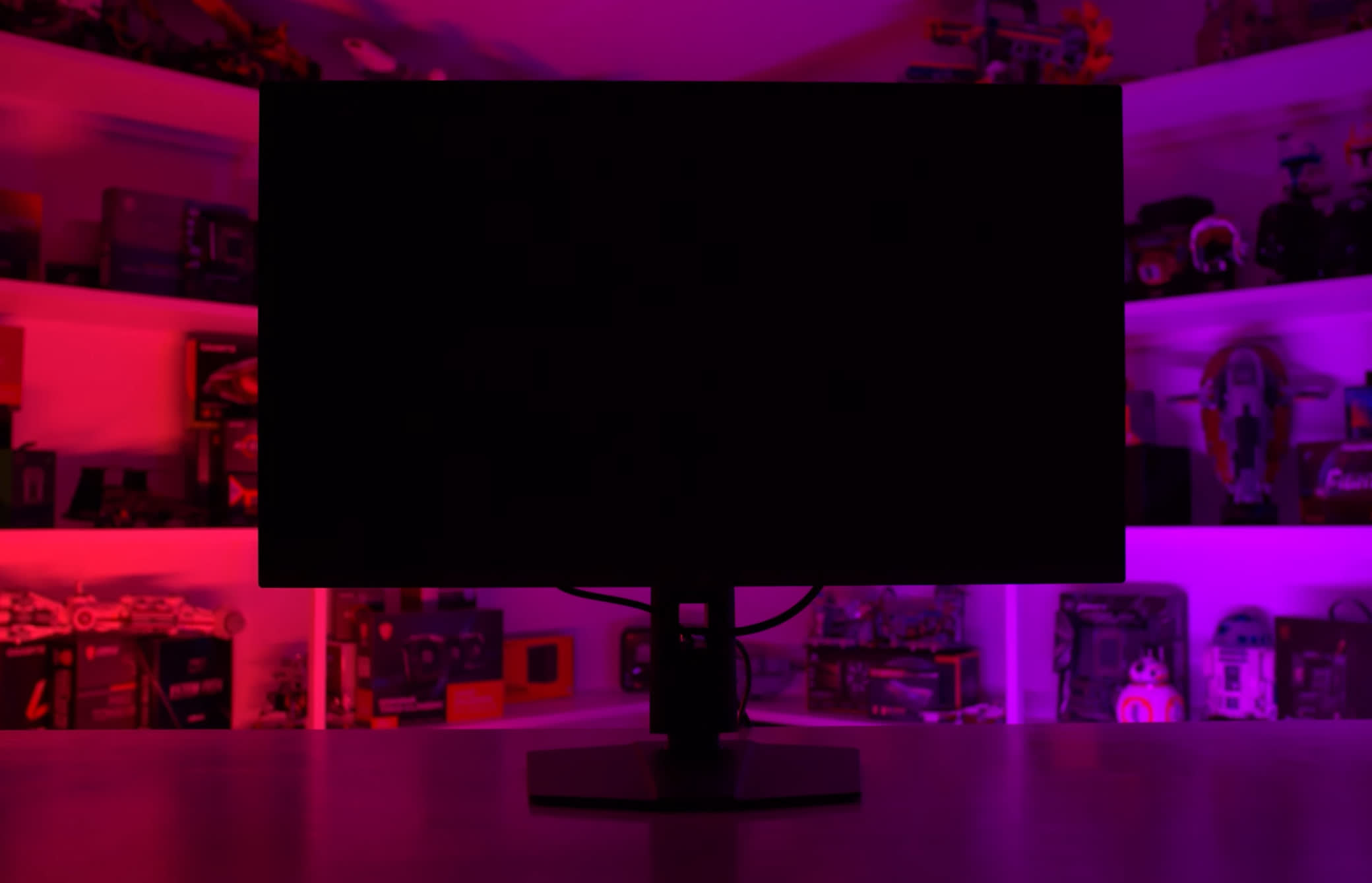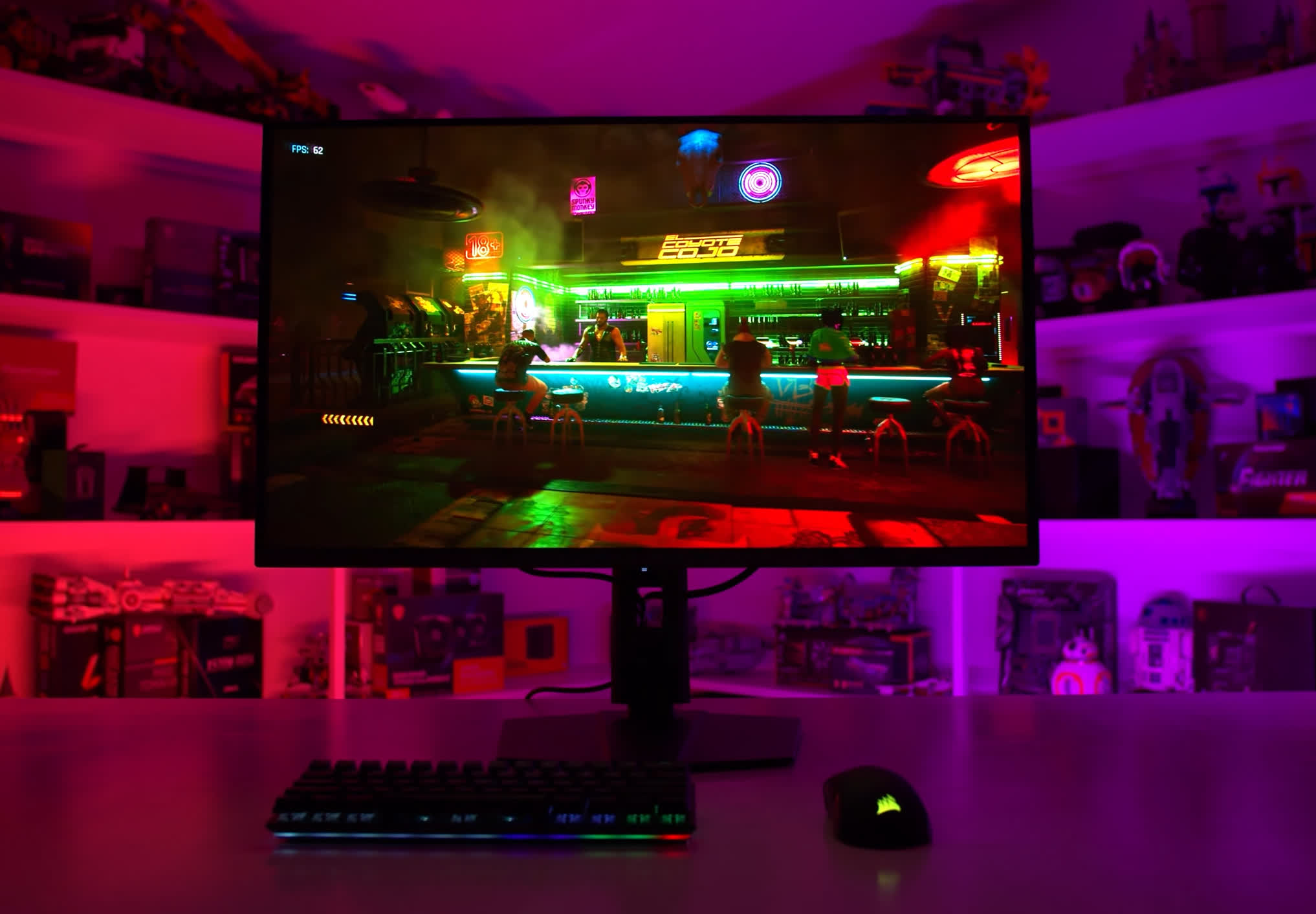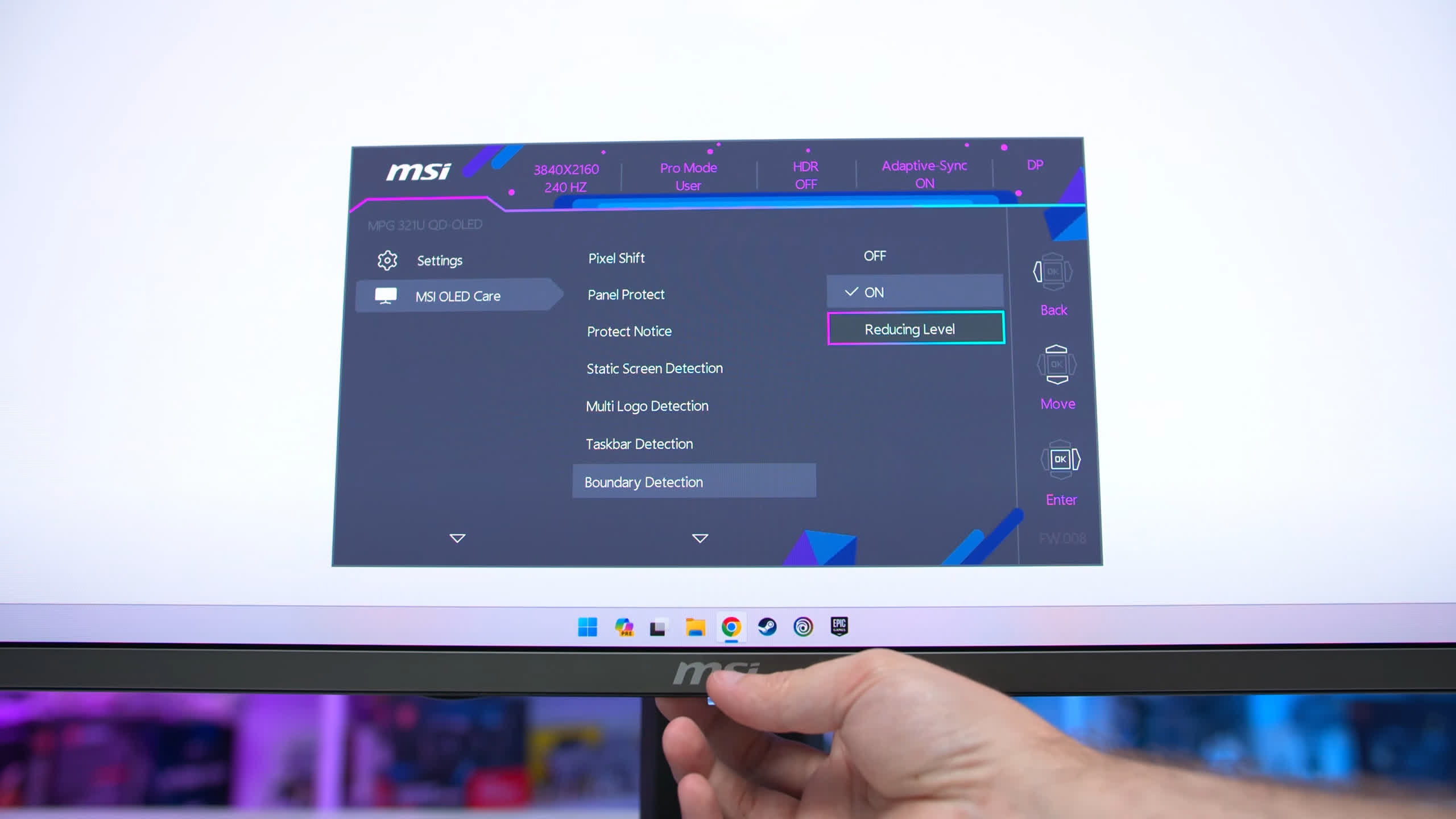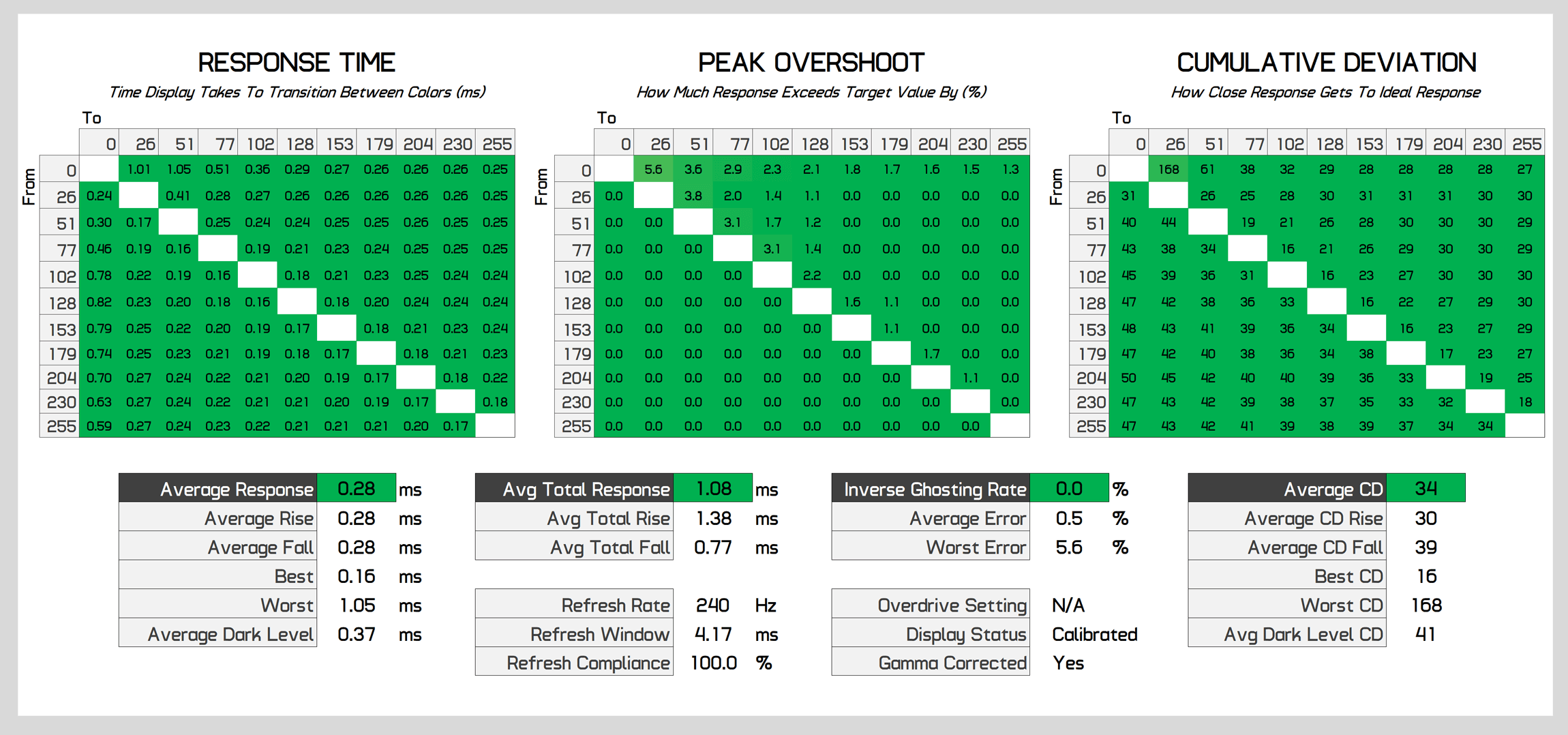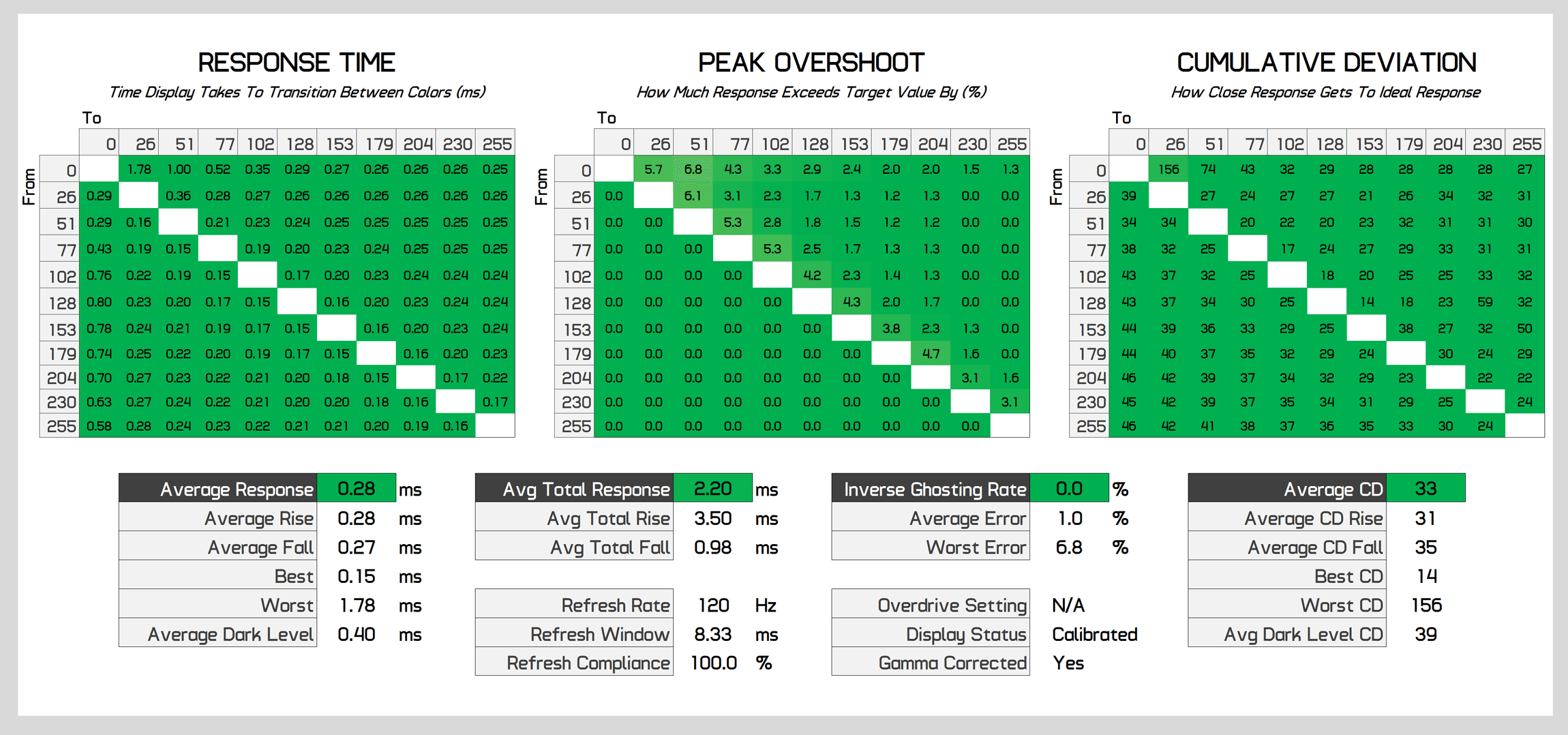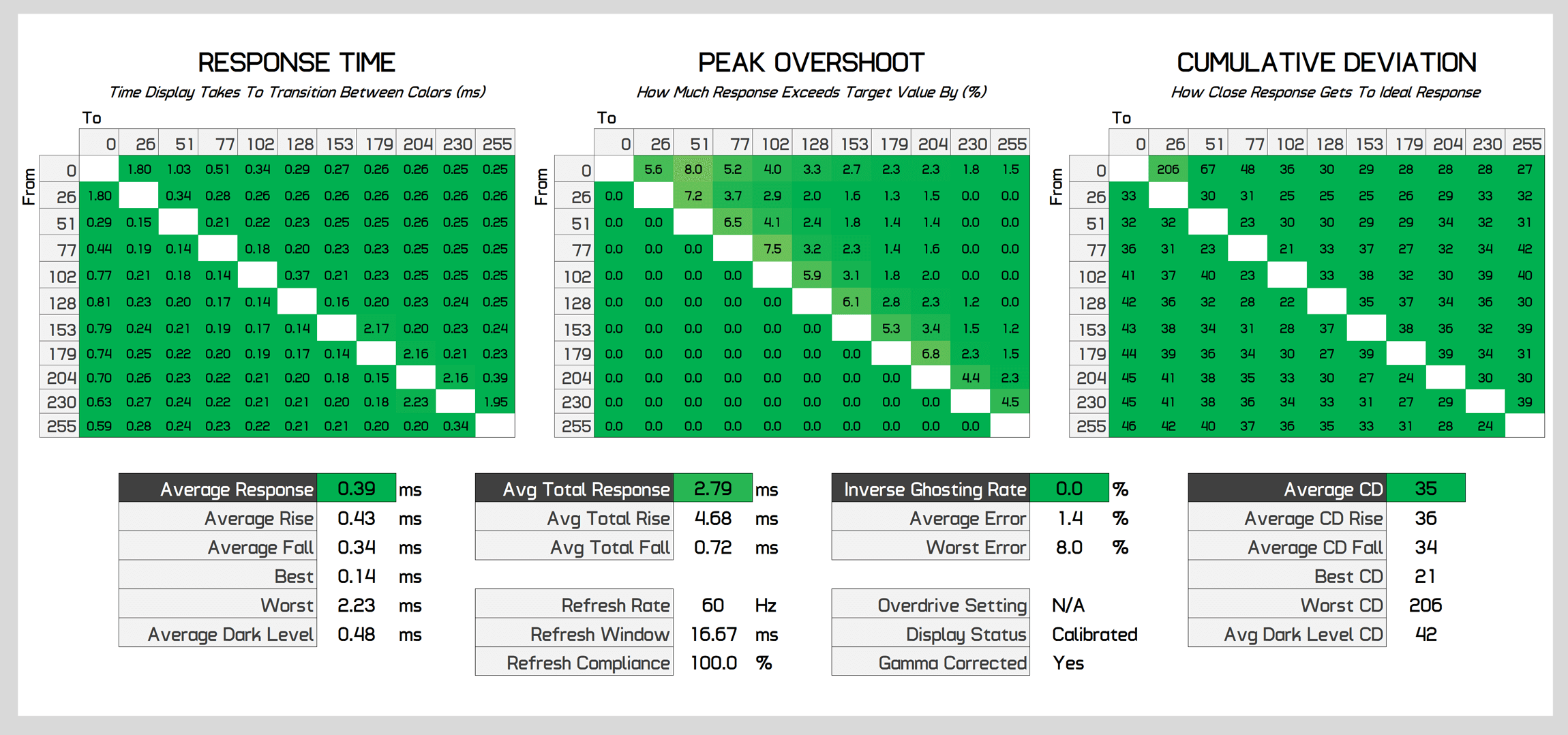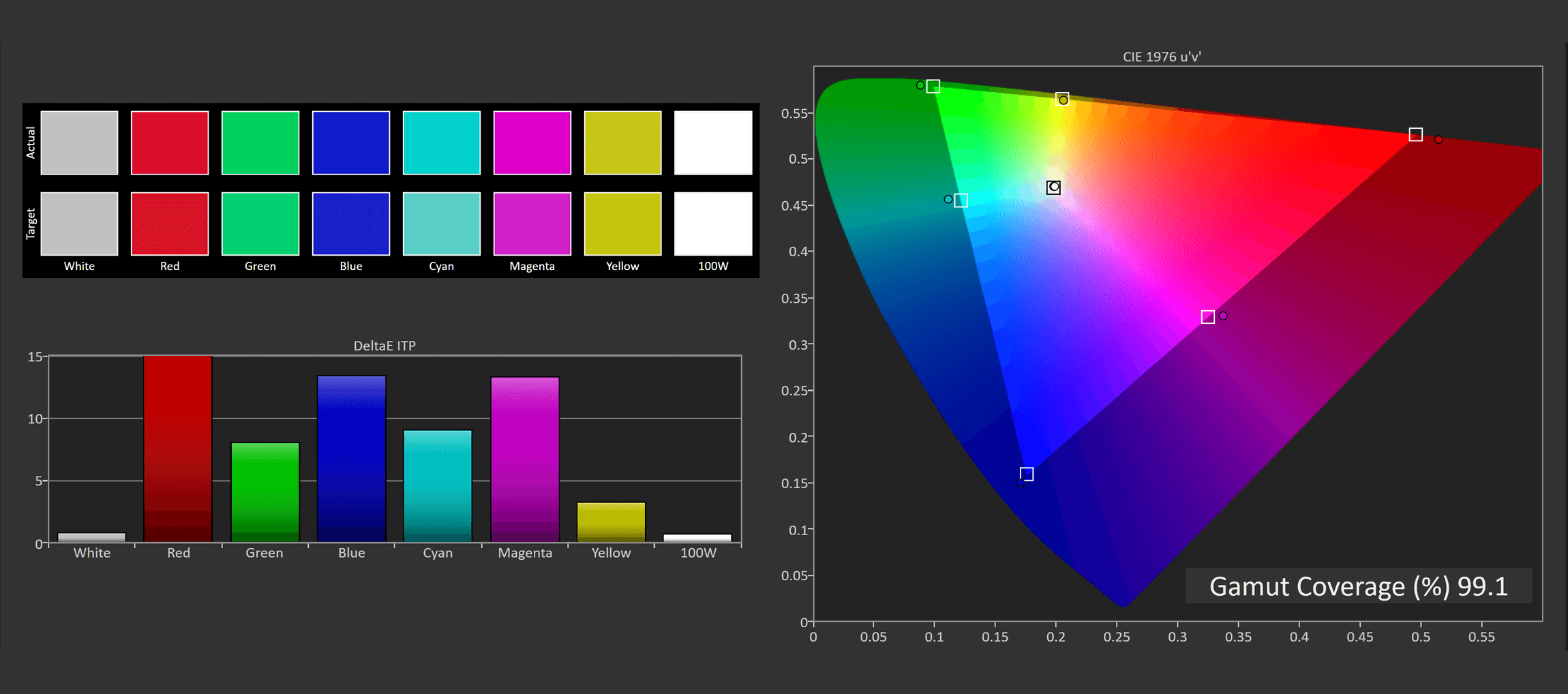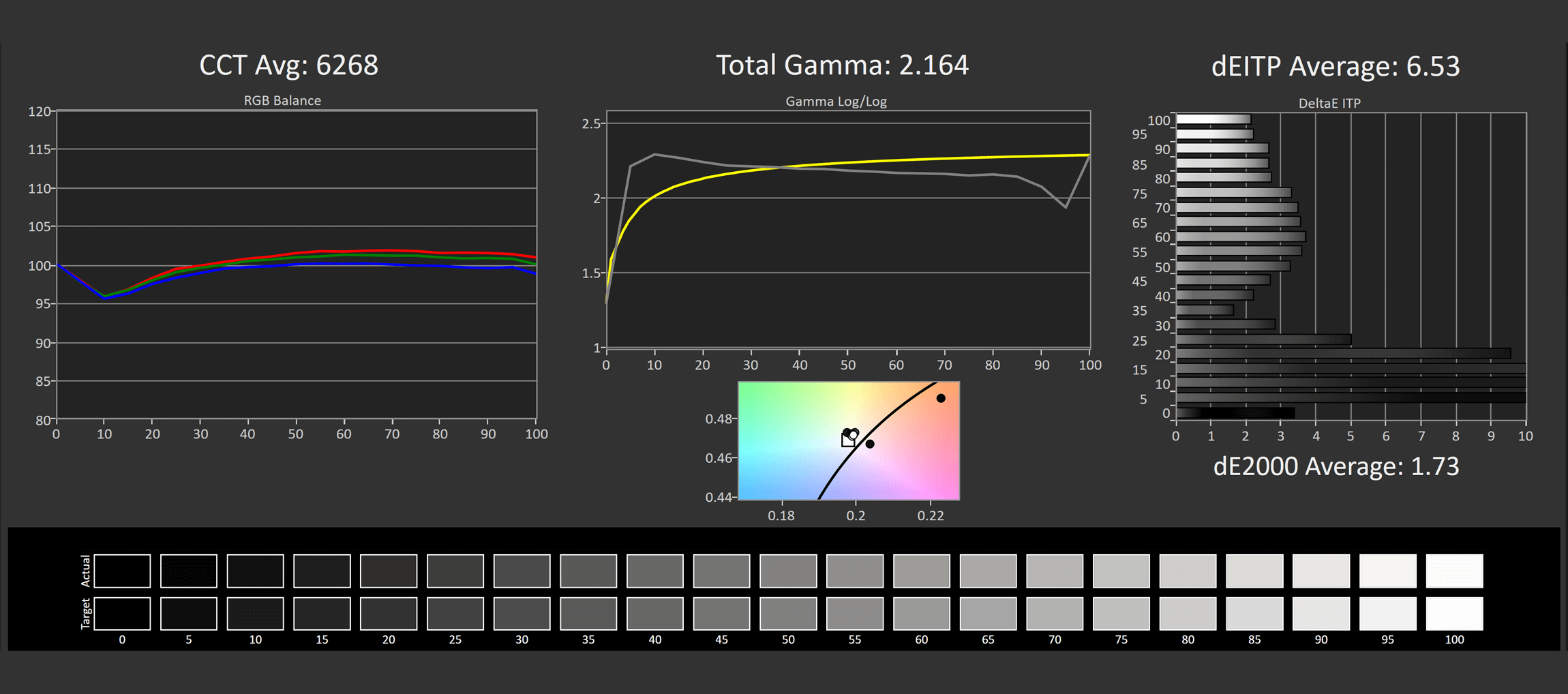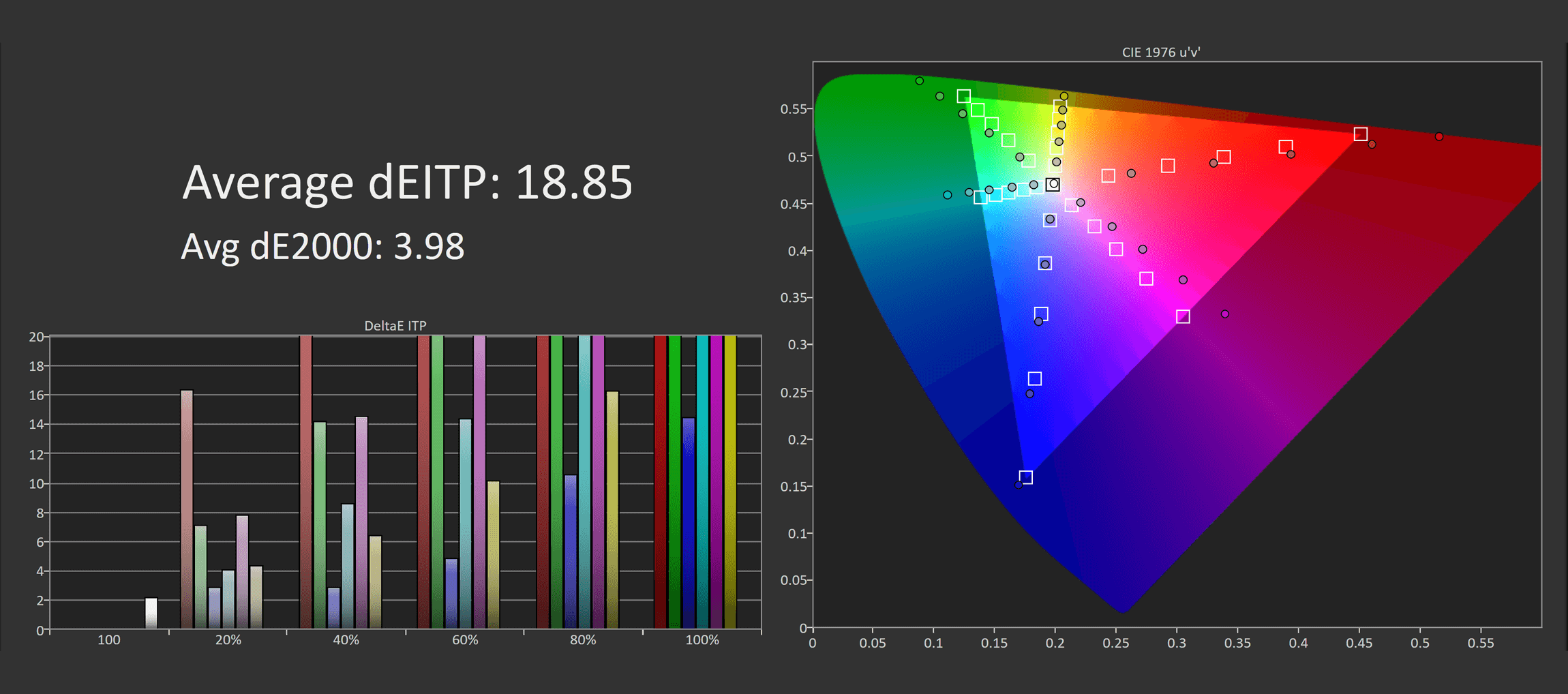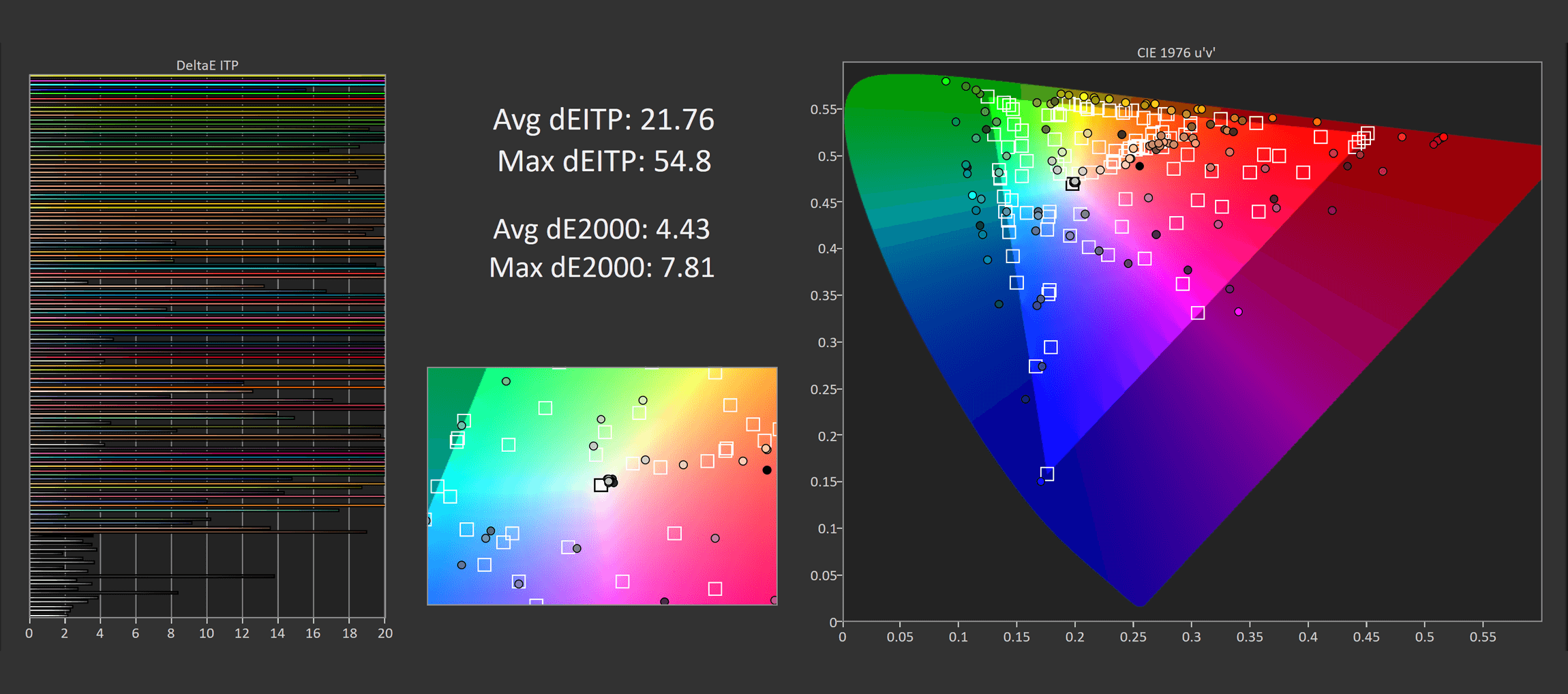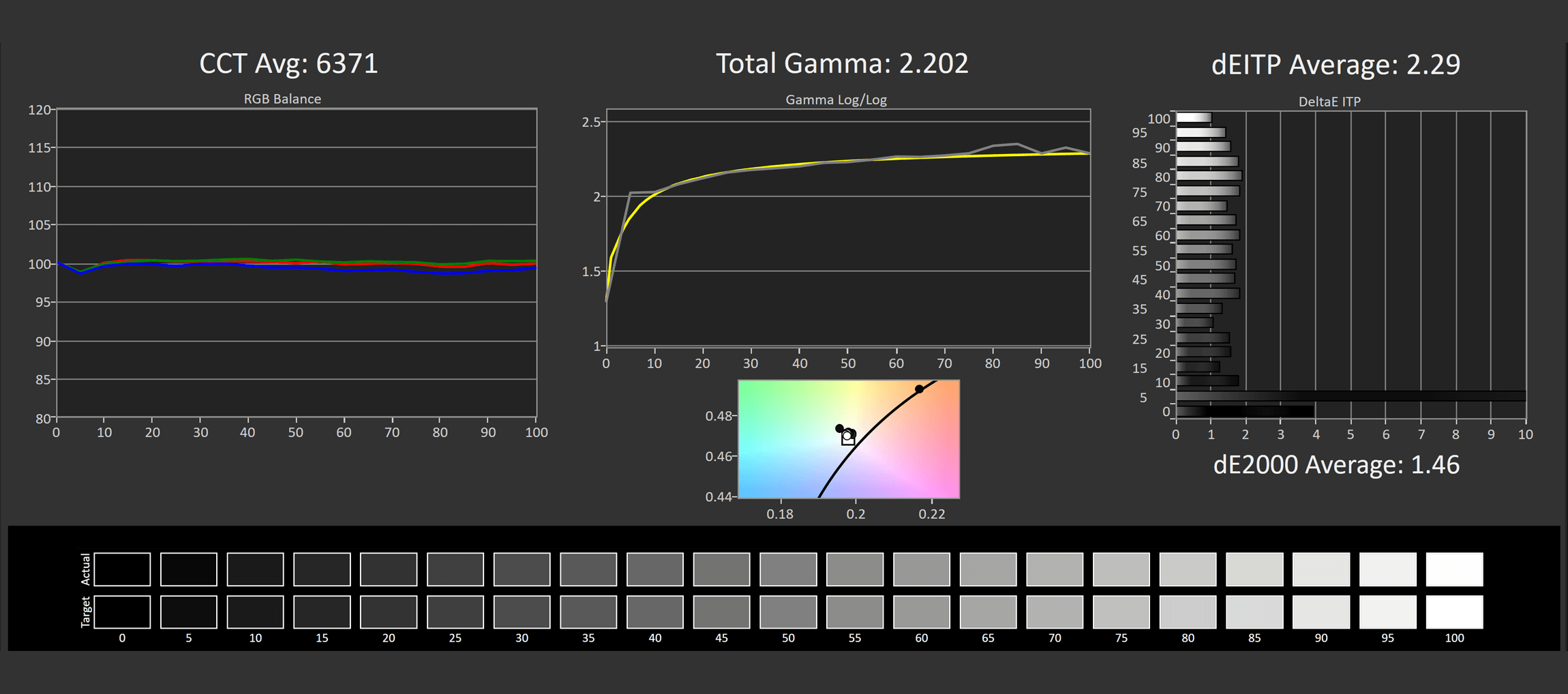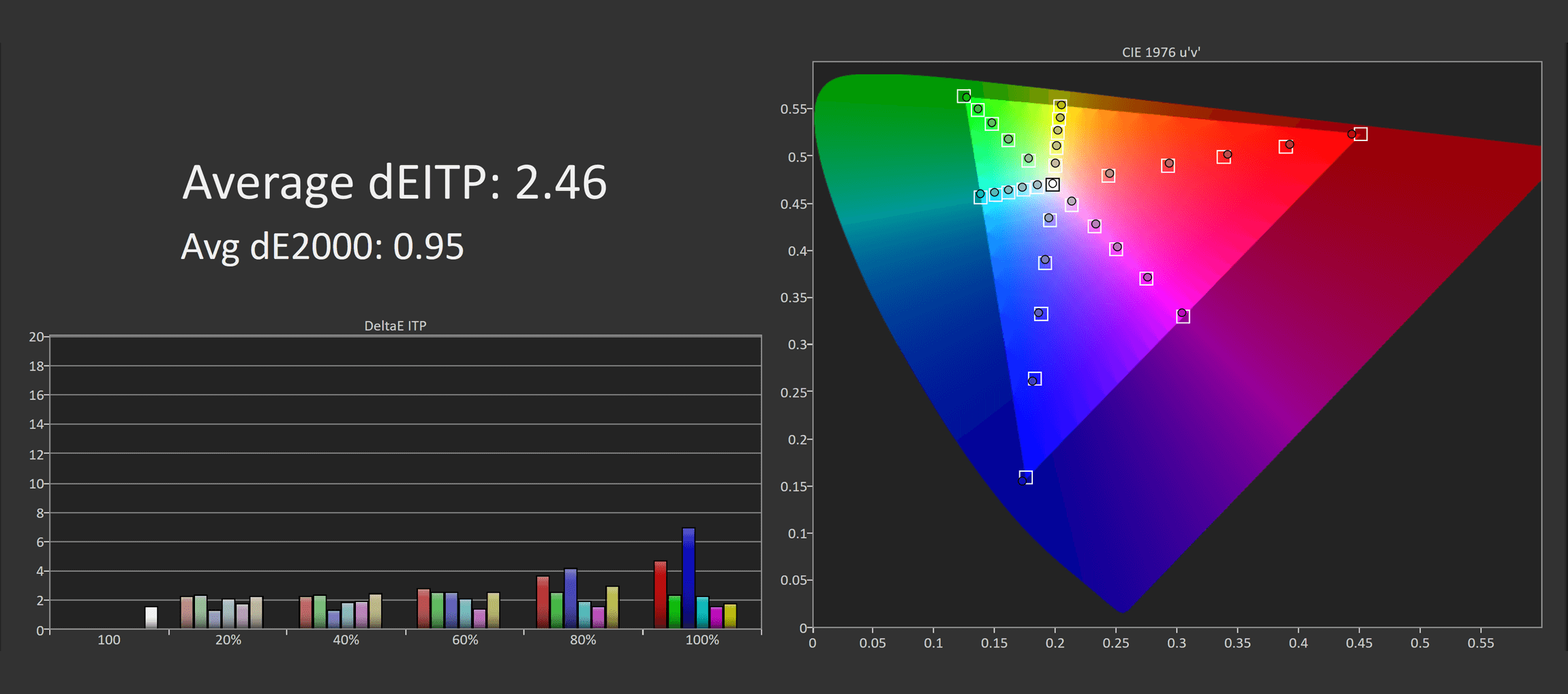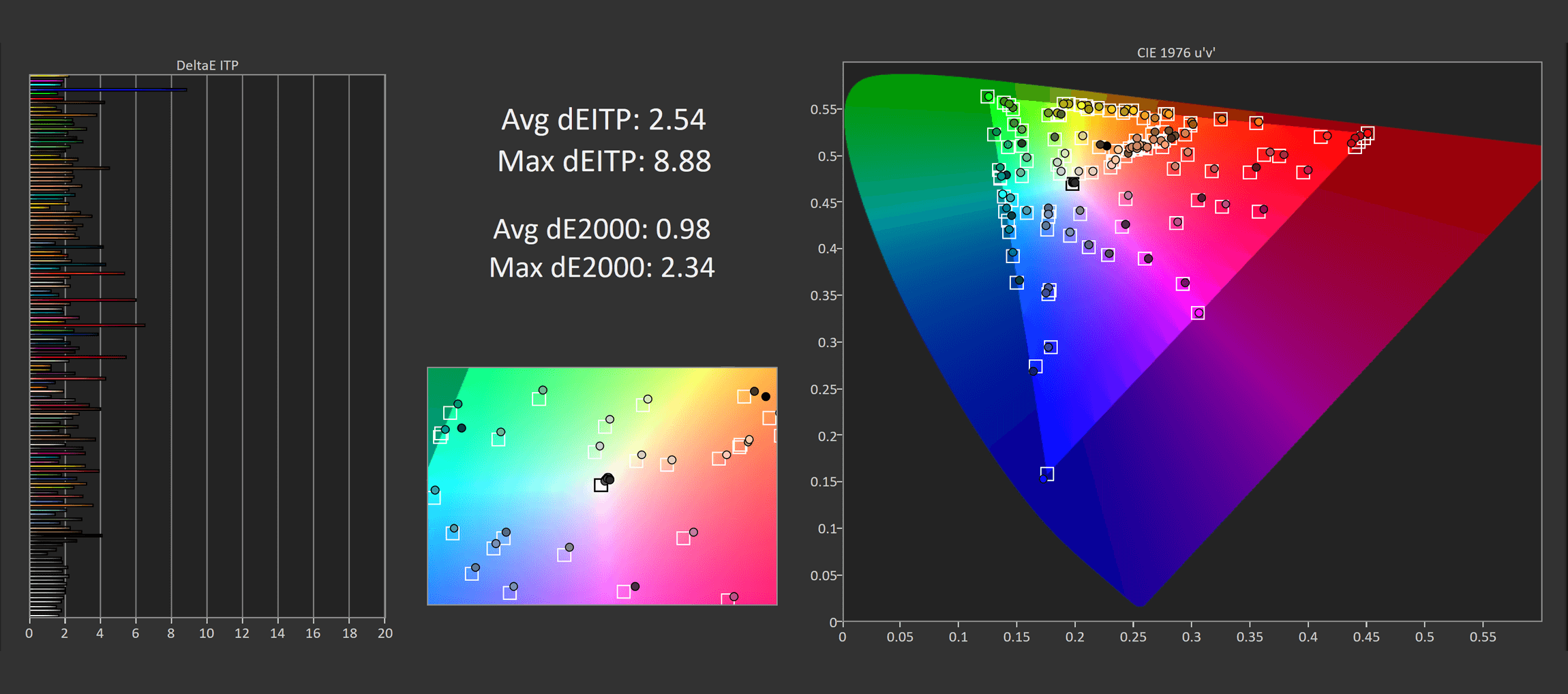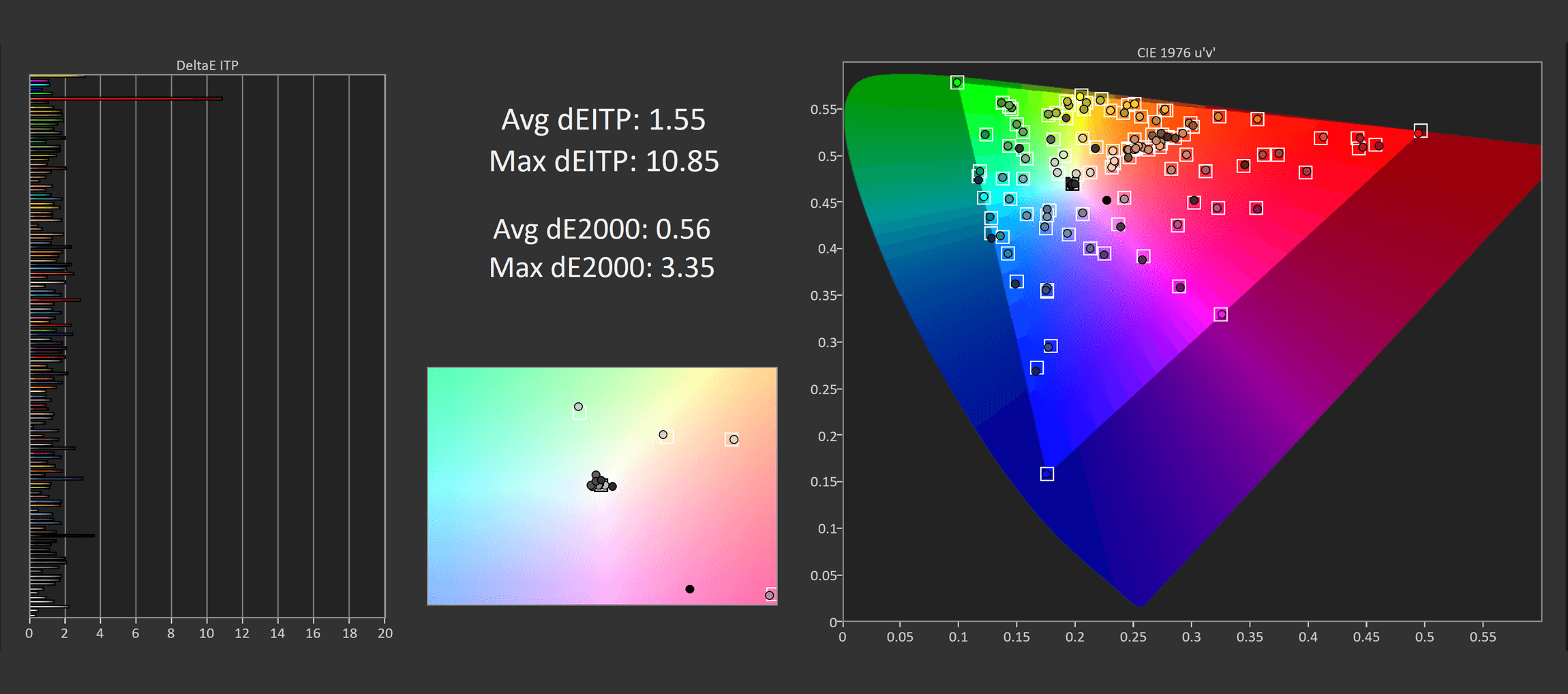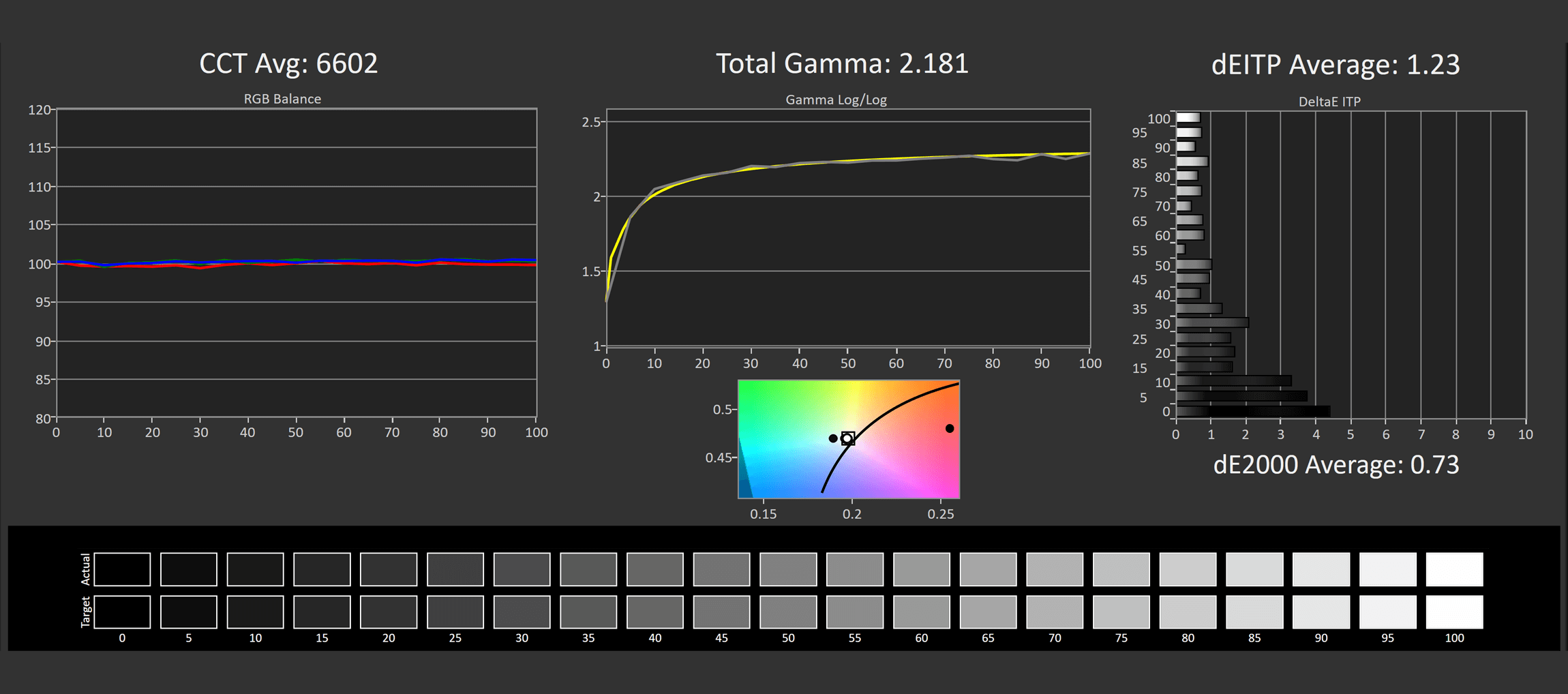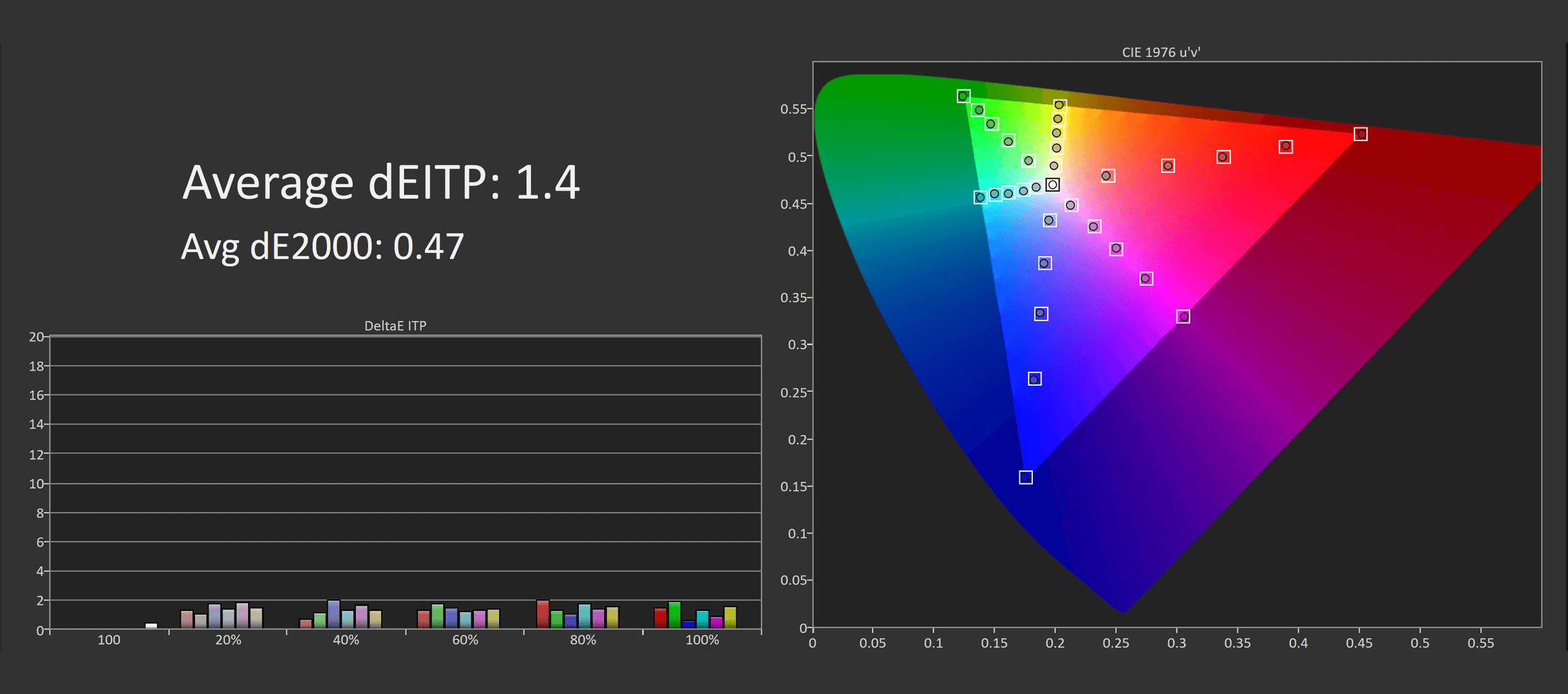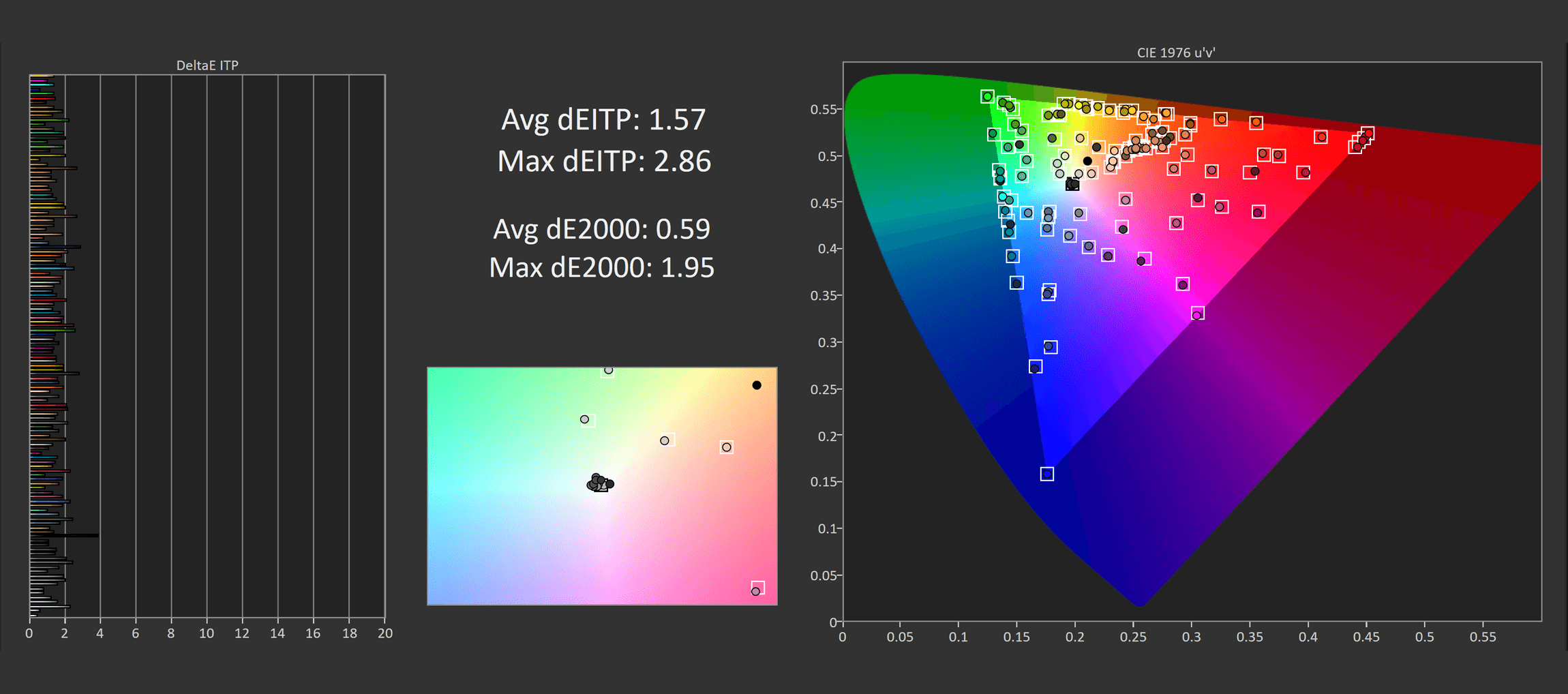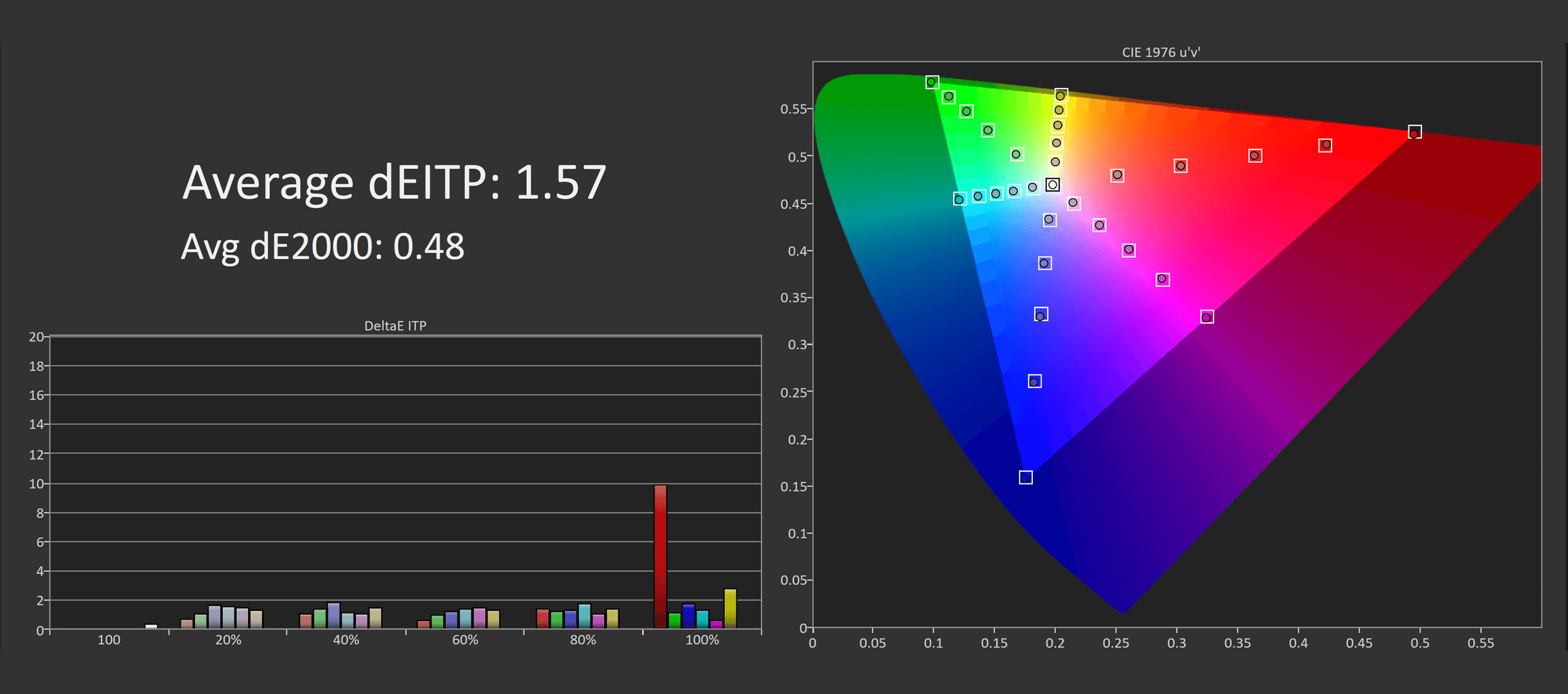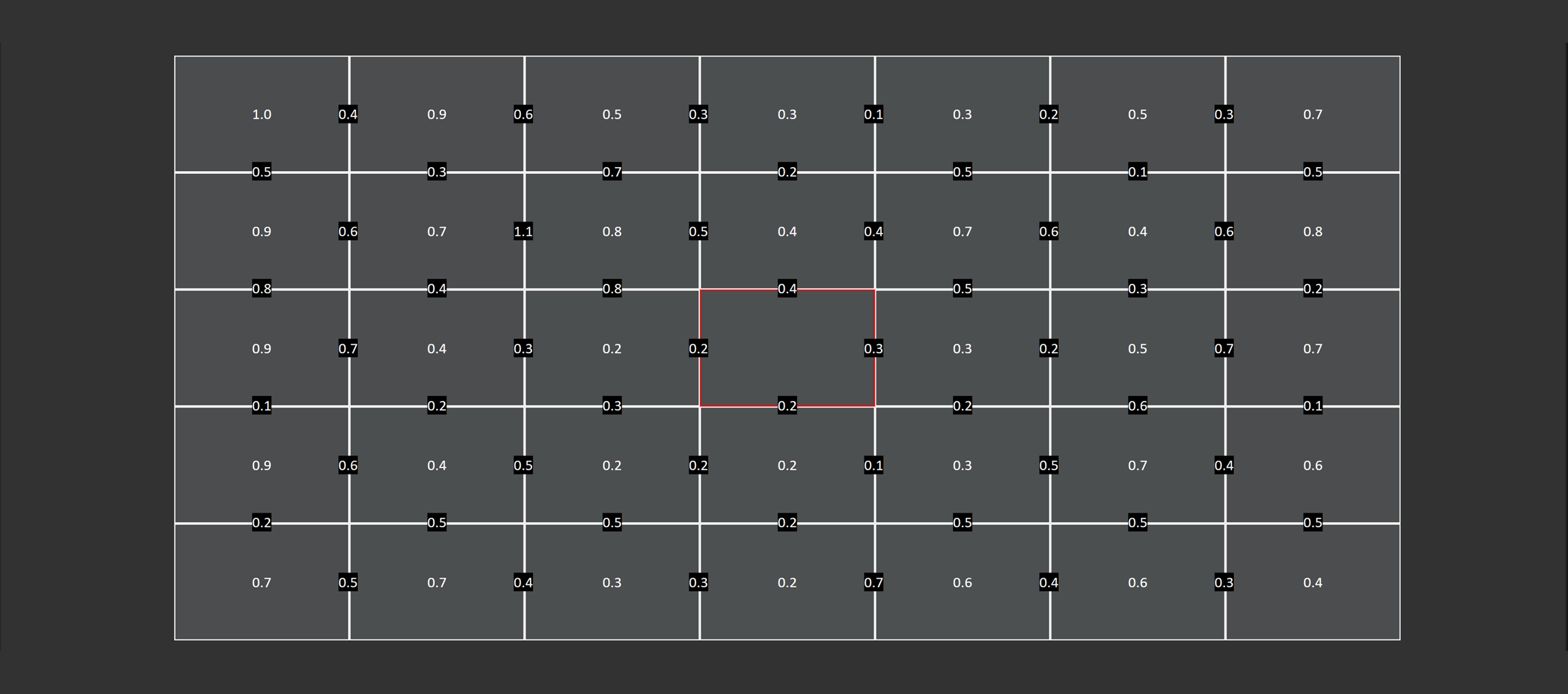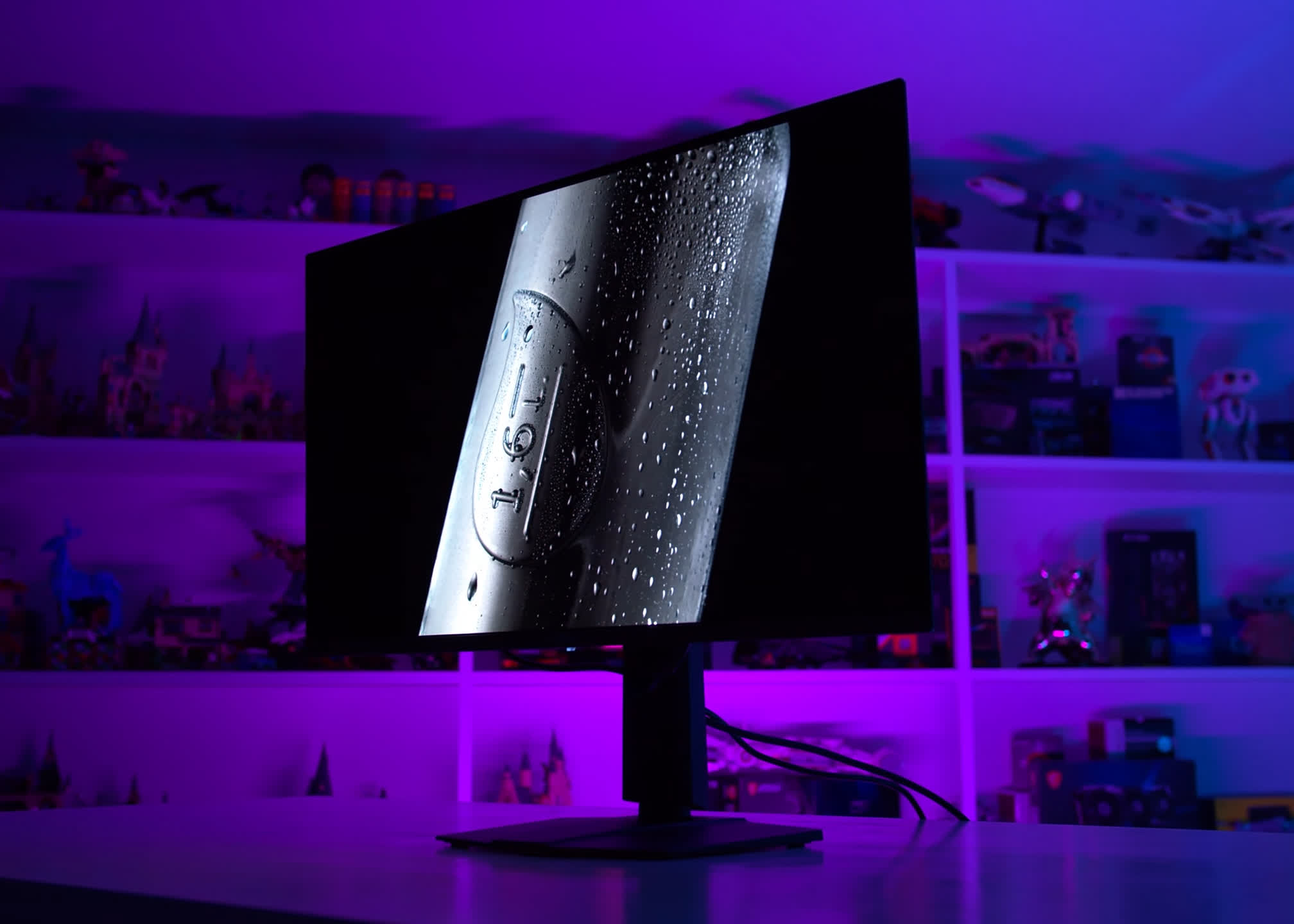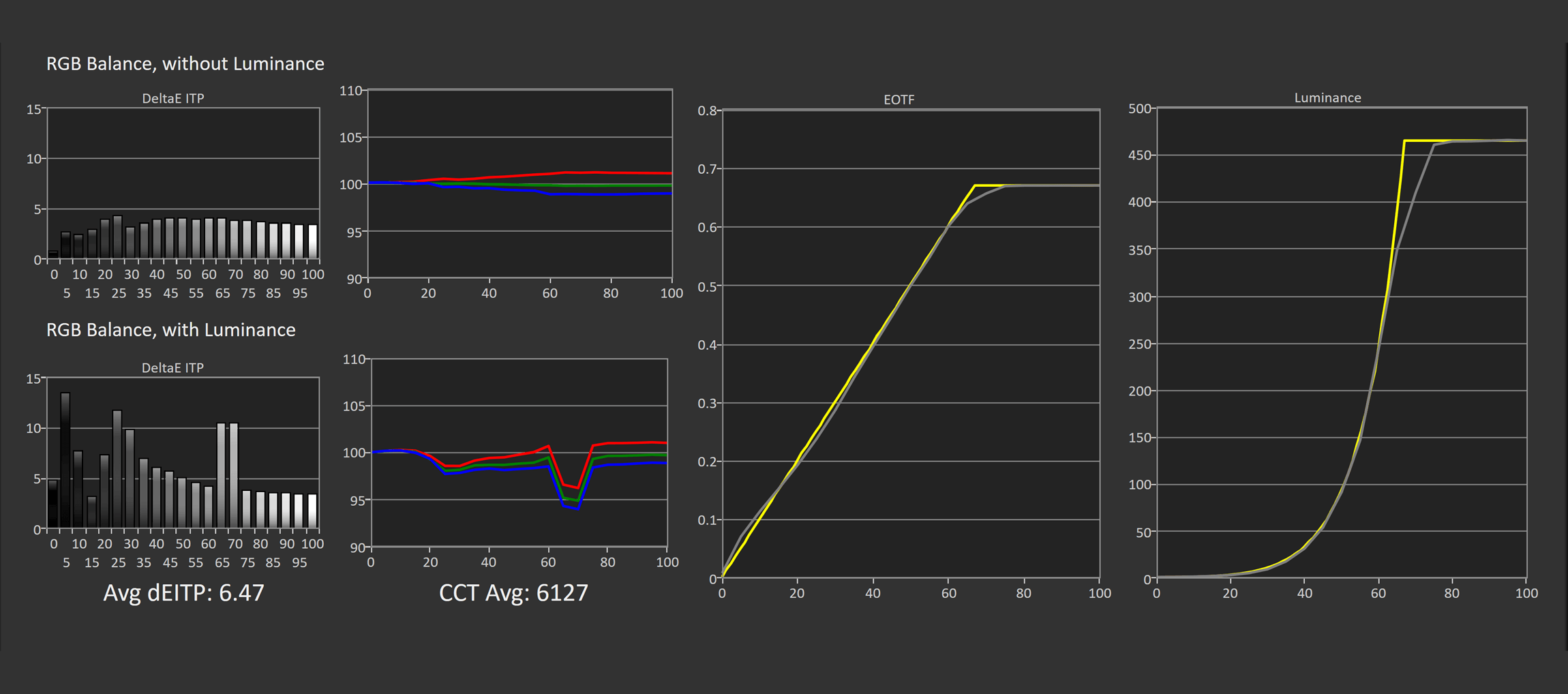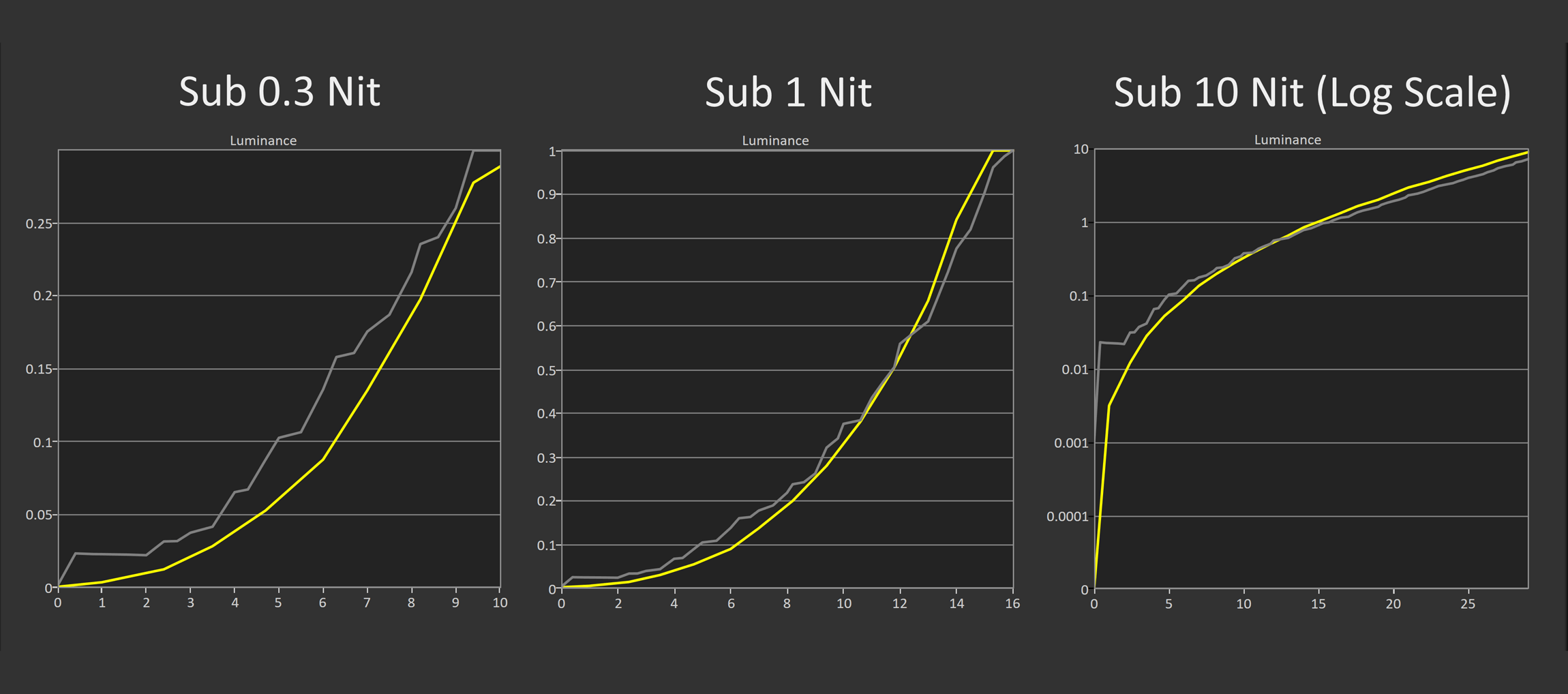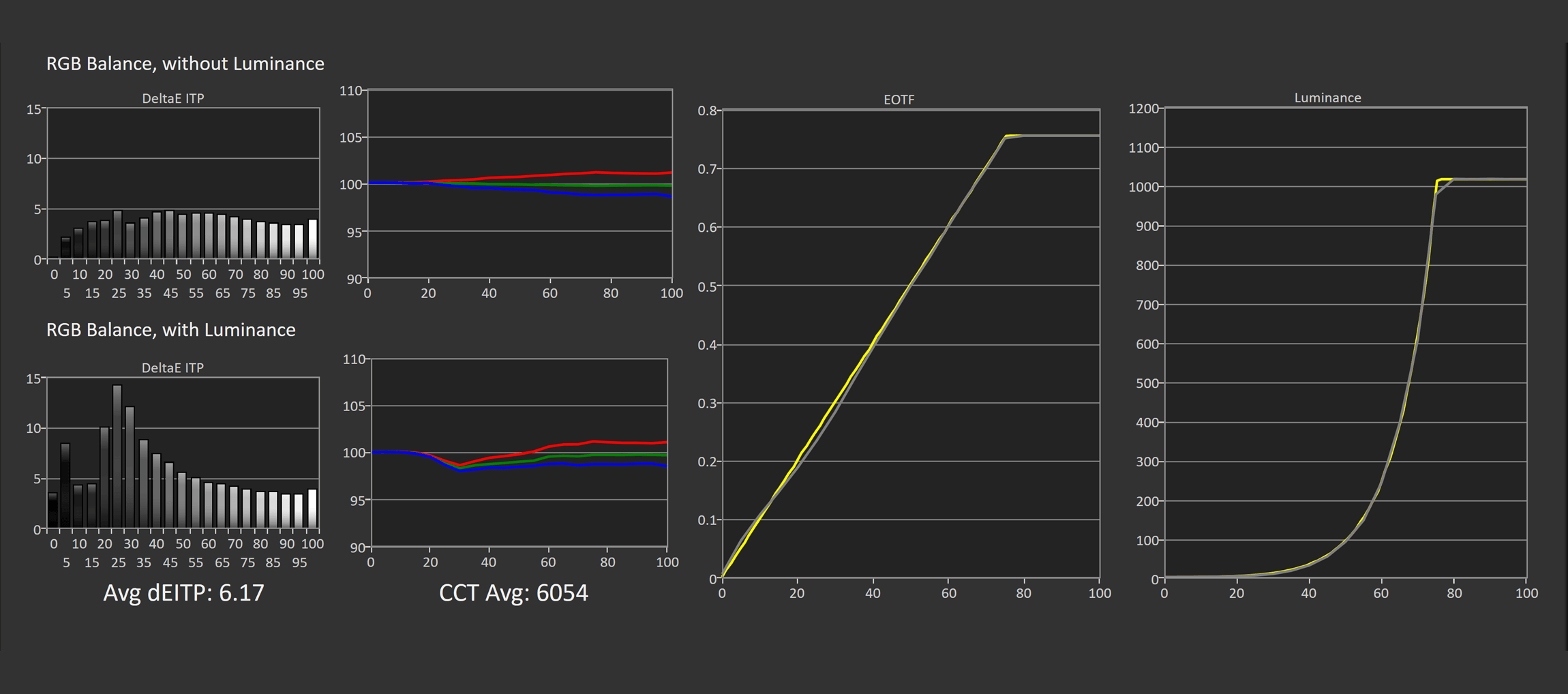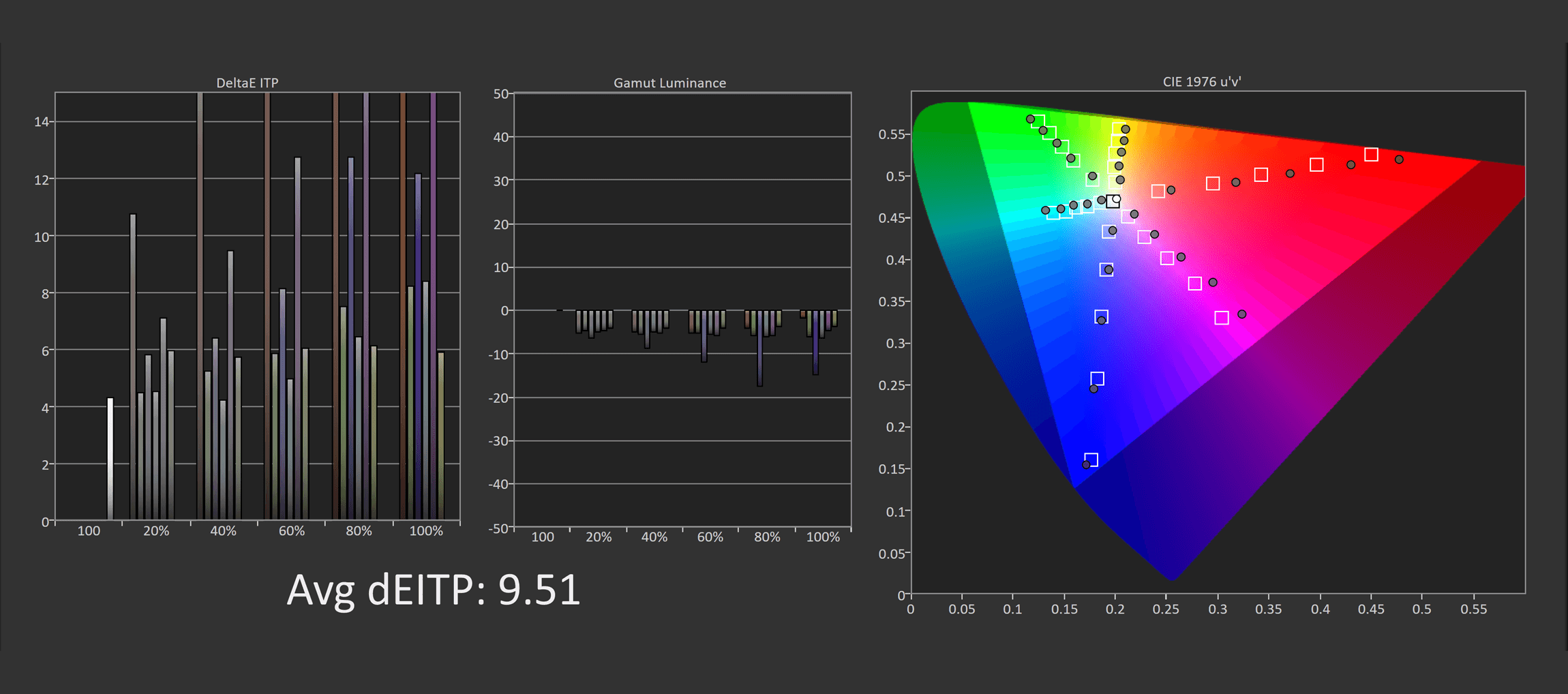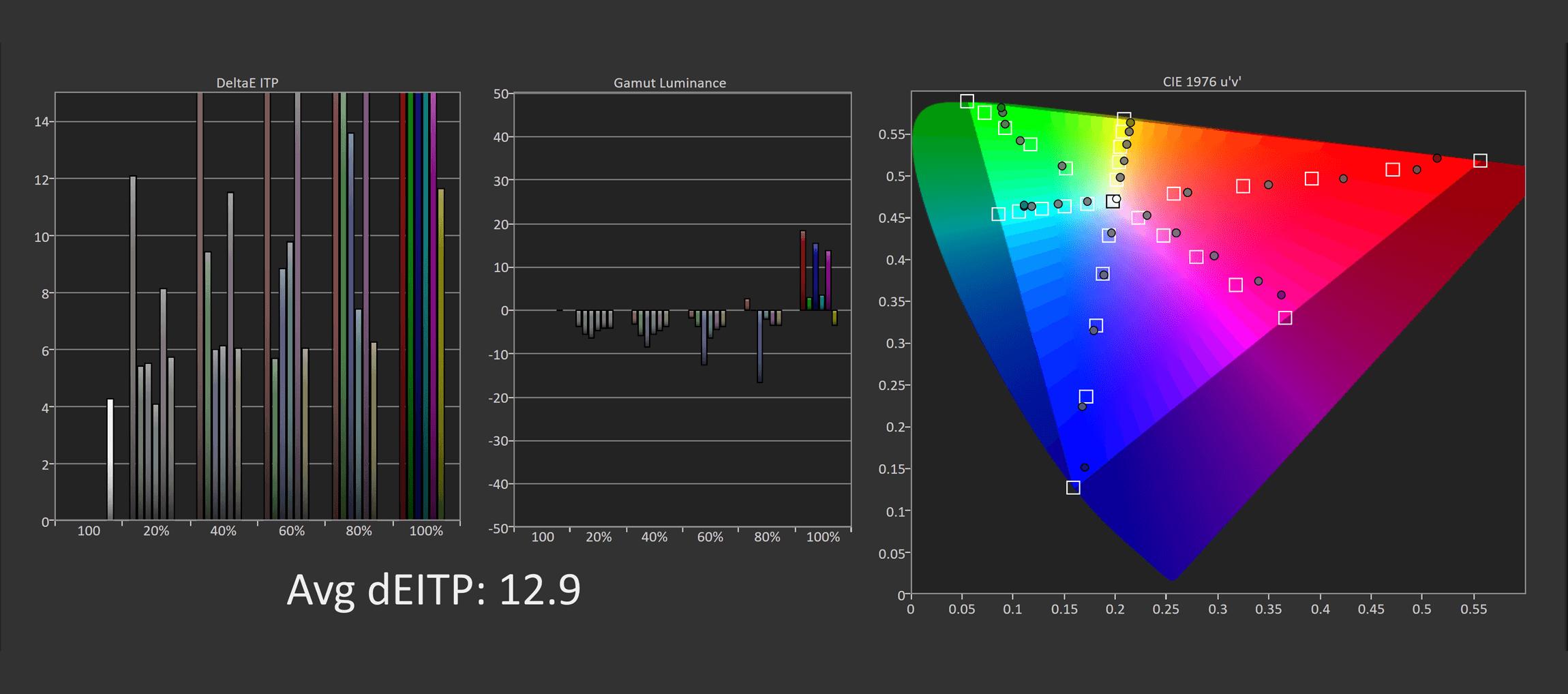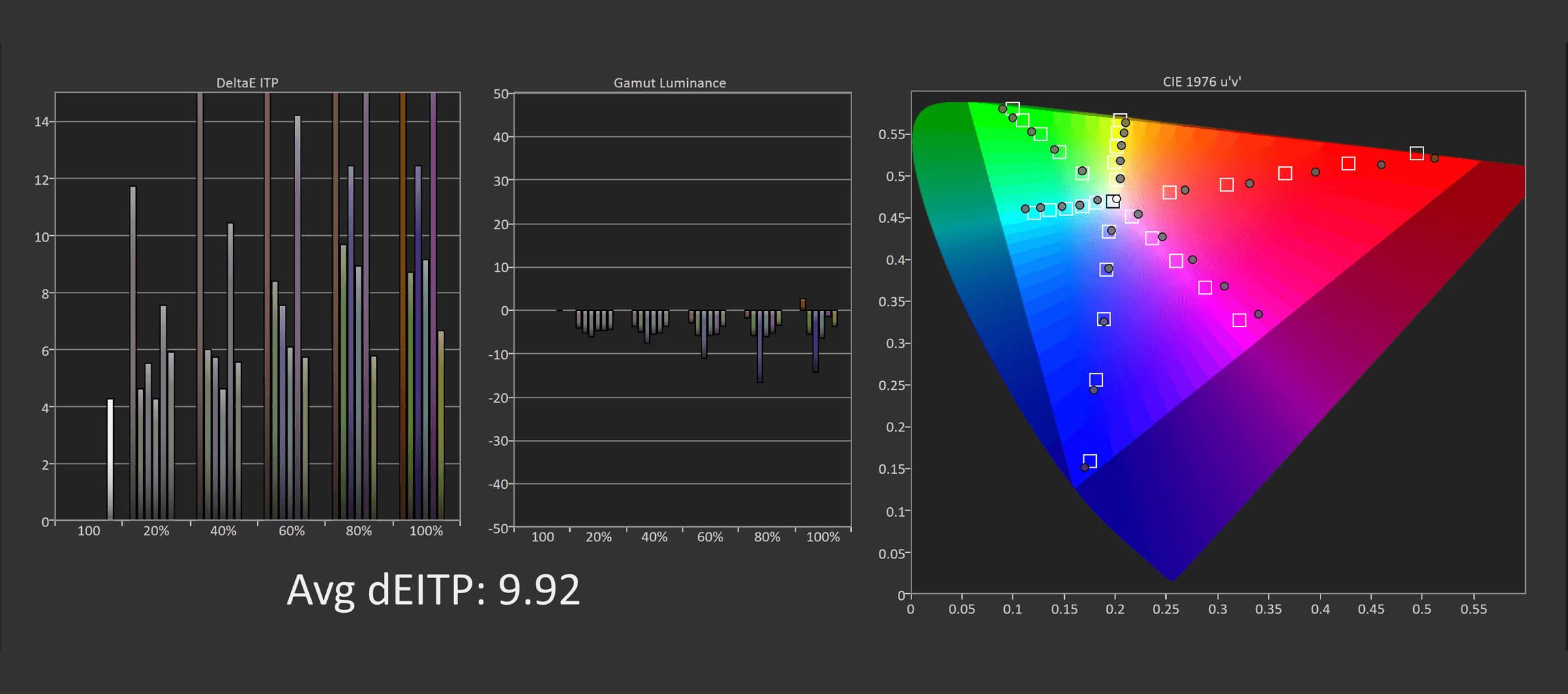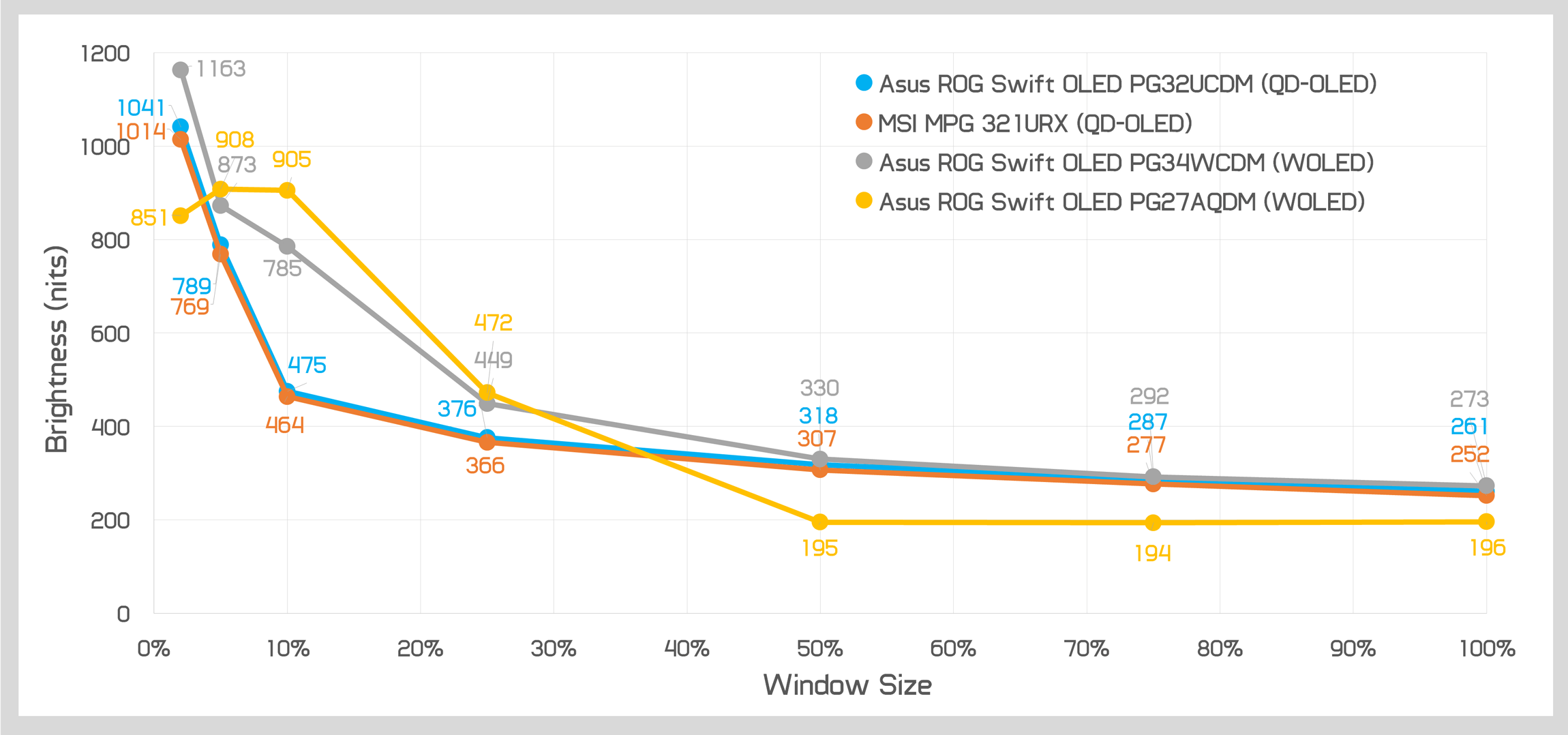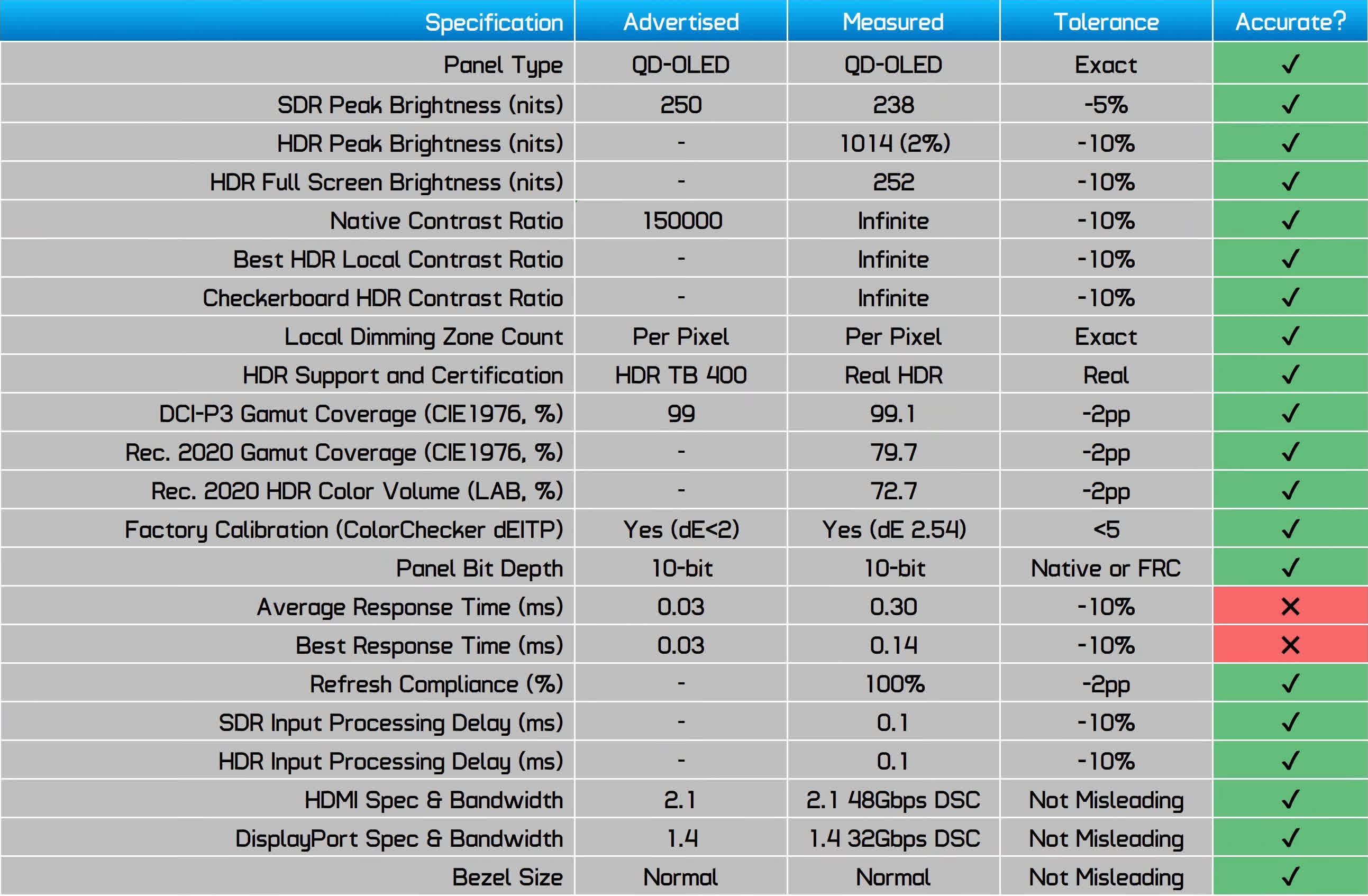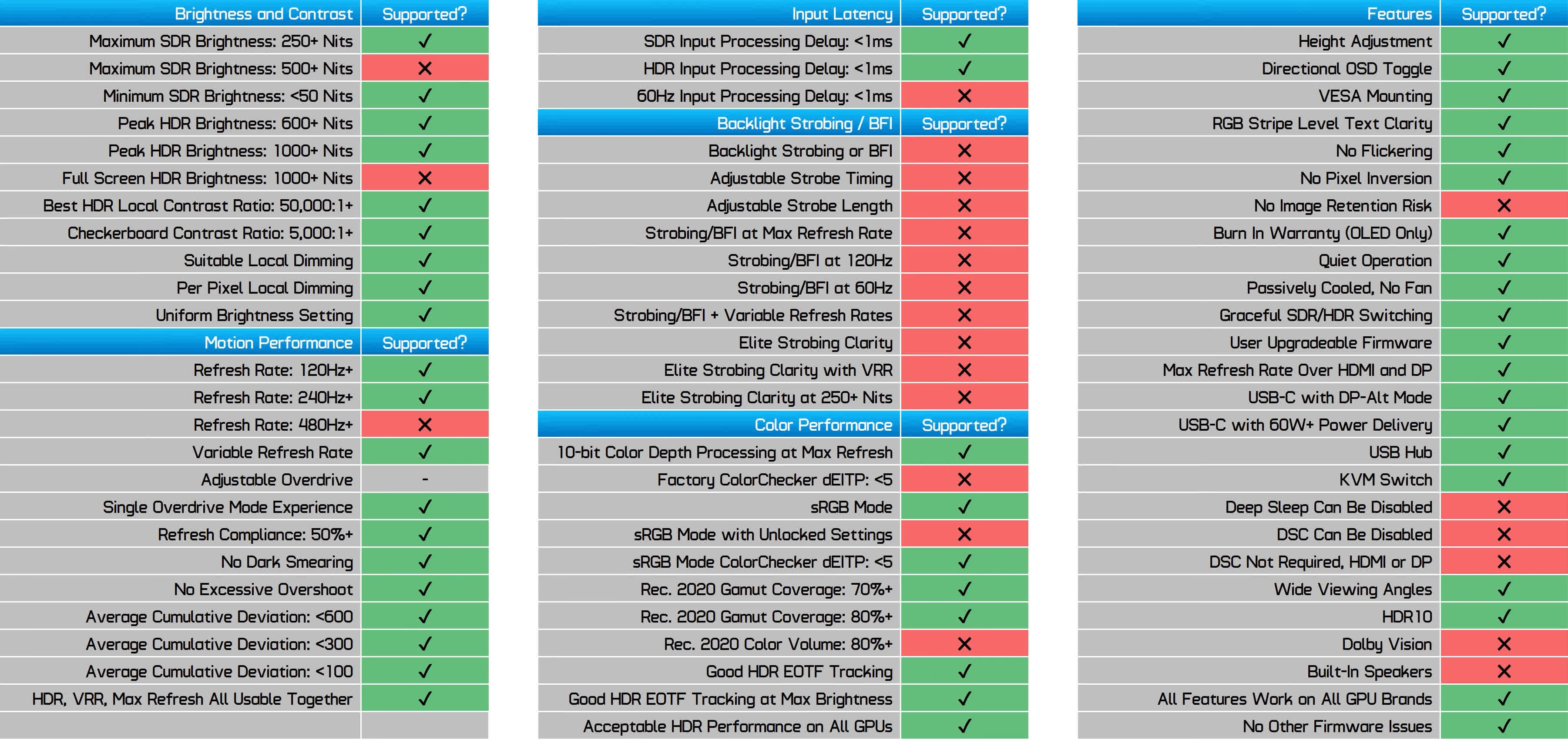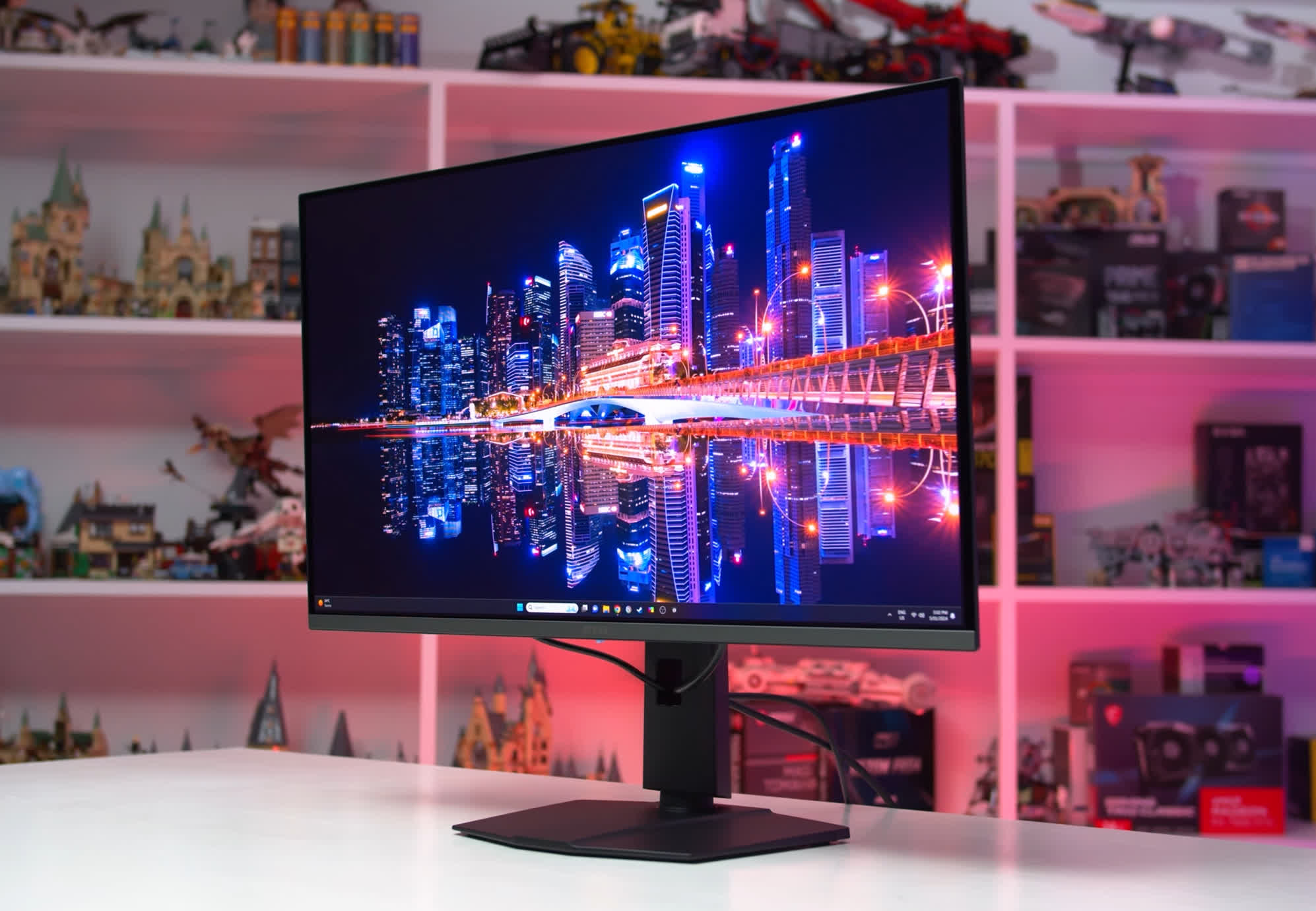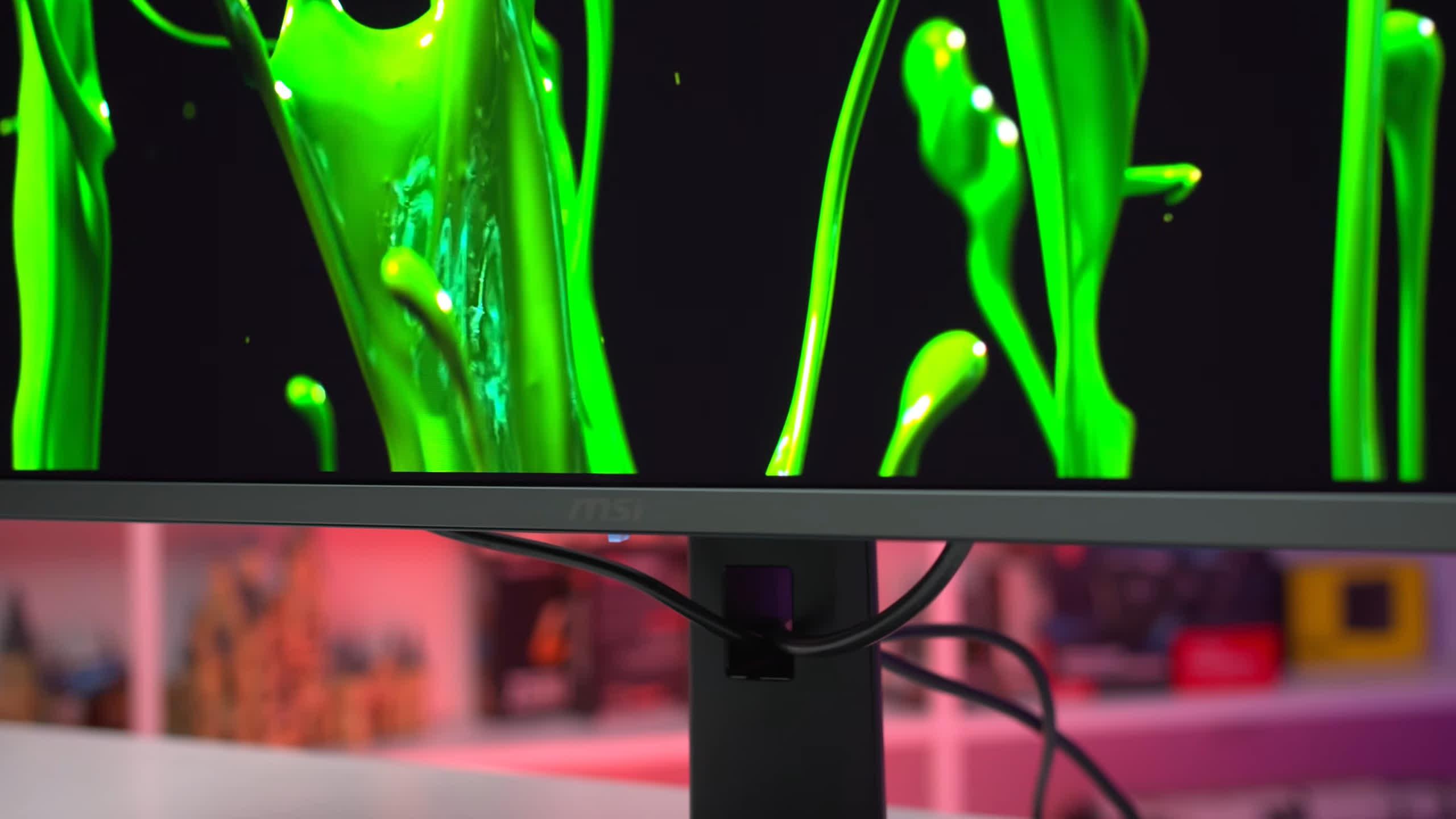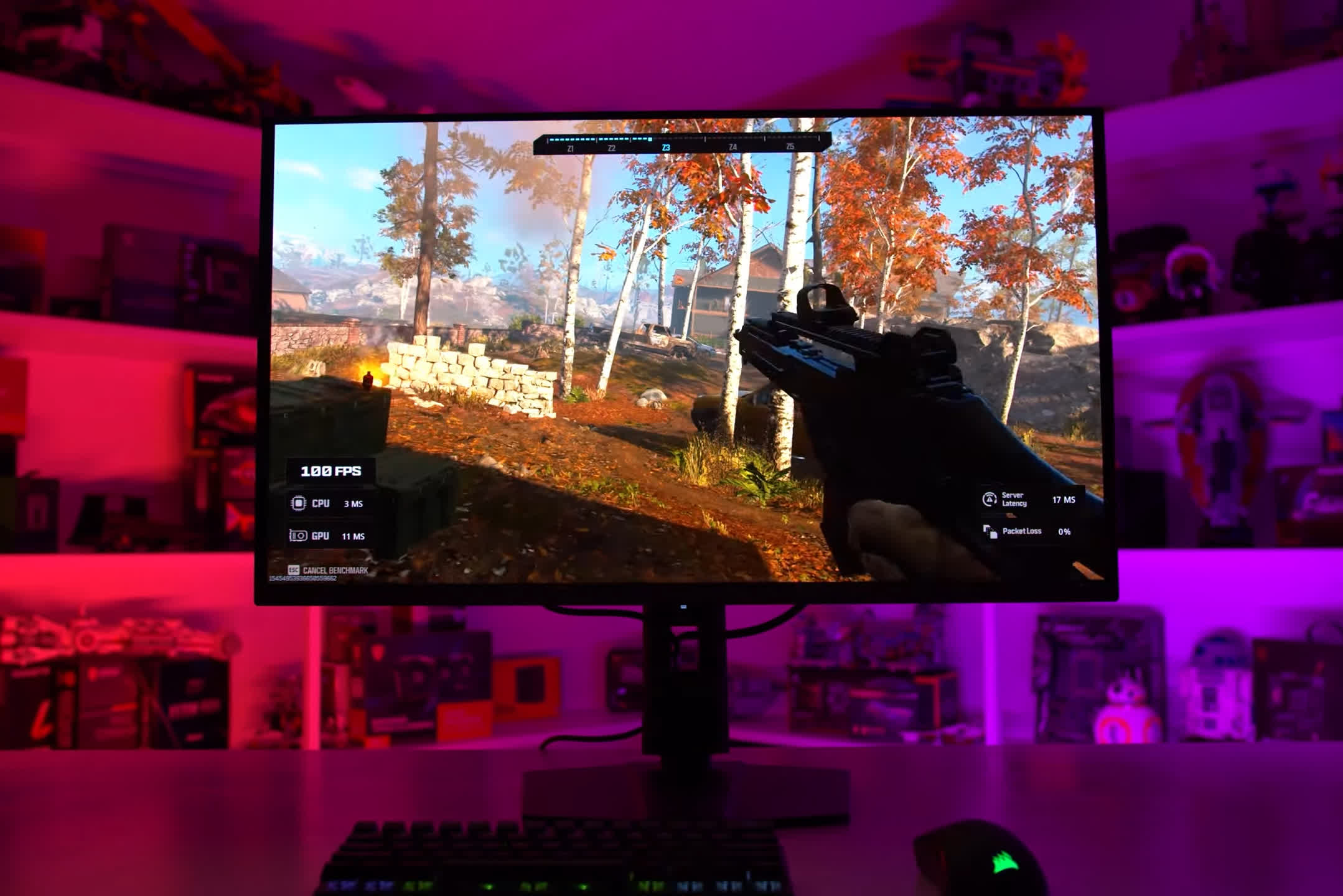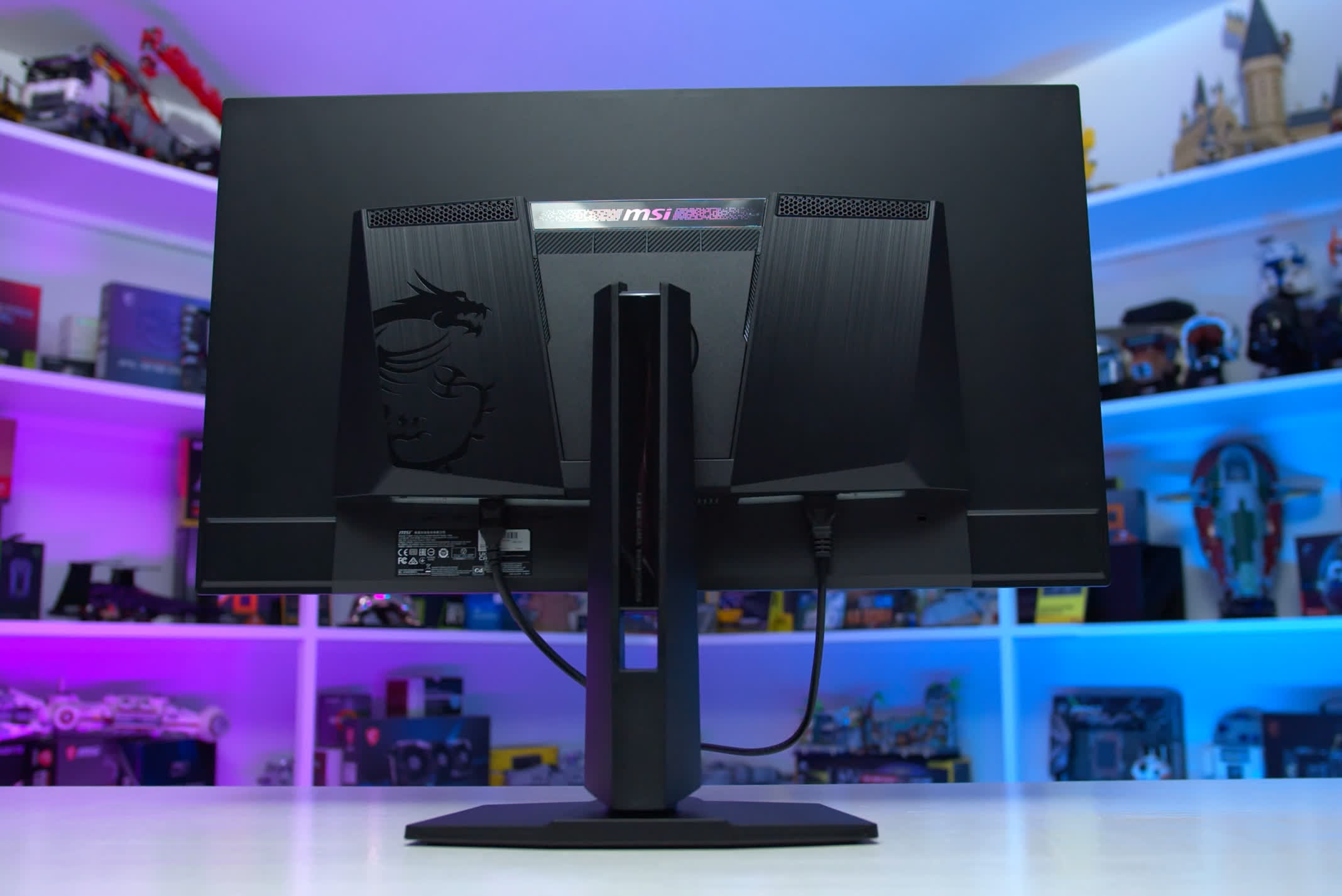The hotly anticipated MSI MPG 321URX is finally available. This is the company's take on a 32-inch 4K 240Hz QD-OLED gaming monitor, using new third-gen QD-OLED panels from Samsung. Well, we should say one of MSI's takes on this format, as they also have the MAG 321UPX in the works, scheduled for release later this year.
At least five makers are set to release new monitors using this panel. We've already checked out the Asus PG32UCDM and there are new models from Dell, Samsung, and Gigabyte that have been announced or released, so it'll be interesting to see the differences in performance and the features MSI has included to stand out from the pack.
The MPG 321URX has generated further interest due to its price. Earlier this year, we had anticipated this monitor would cost around $1,200, which is the typical going price tag for this kind of monitor. But MSI changed their mind and launched it for $950 in the US, a much more aggressive price point that undercuts the competition.
Unfortunately though, this appears to be limited to the United States because looking at other regions, such as Europe and Australia, the MPG 321URX is selling above 1200 euros, and in Australia it's currently on sale for $2,200 AUD, or the equivalent of $1,300 USD. That's going to significantly affect our conclusion depending on whether you have access to $950-level pricing or not.
Specs and Design
The monitor design uses a typical OLED format that we've seen across a lot of products. The front is dominated by the large 32-inch panel with slim bezels on all sides and with the grey bottom bezel I think it looks quite good, with a premium touch. This is despite the stand being mostly black plastic, with similar materials used for the rear section.
On the rear we have the "central box" design that houses all the components, then the OLED panel extends outwards from there with a nice slim aesthetic. The MSI model's panel is noticeably thinner than the Asus we reviewed recently, at just 4mm thick versus 8mm on the Asus, though both have that impressive futuristic slim panel look.
The rear box is nothing special, a mishmash of different plastic finishes and vents along with a small RGB LED section with the MSI logo in it. It doesn't look bad, but it's the thin OLED panel doing the heavy lifting.
The stand is sturdy and offers a good range of adjustability including height, tilt, swivel and a small amount of pivot although you can't orient this monitor into portrait without VESA mounting it. The MSI model gets slightly taller than the Asus in terms of maximum height. The stand base is a square-ish design, so it doesn't take up as much desk width, but it does occupy a bit of desk area relative to 'legged' designs.
Connectivity
For ports we have a decent selection: one DisplayPort 1.4 with DSC, two HDMI 2.1 48 Gbps ports with DSC, and a USB-C port that supports DP-Alt mode and up to 90W of power delivery. In addition we get a two port USB 2.0 hub and a headphone jack.
Both DisplayPort and HDMI allow you to run the monitor at the maximum 240Hz refresh rate without compromises, and with the addition of a bunch of USB ports, a KVM switch is also included.
The OSD is controllable through a directional toggle behind the MSI logo on the front. It's a relatively easy to navigate OSD and its nice to see settings preserved in the SDR and HDR modes. It uses MSI's typical interface with their standard set of features, so we get a crosshair, refresh rate readout, sniper mode, shadow boosting, low blue light and so on. Color controls are average and unlike the Asus model we don't get black frame insertion support.
Obviously a big talking point with the new 4K QD-OLEDs is text quality. Moving to a 3840 x 2160 resolution at this size is equivalent to 140 PPI, a 27% improvement in pixel density compared to 110 PPI 27-inch class 1440p OLEDs we had before. Subpixel structure improvements introduced with 2nd-gen QD-OLED, and carried through to this 3rd-gen panel, also enhance the apparent pixel density for text and high contrast edges relative to first-gen panels and WOLEDs.
I was genuinely quite impressed with the text clarity on this 4K QD-OLED monitor, which offers the same experience as the Asus PG32UCDM and others using this panel. The slight pink-green fringing you see on first-gen QD-OLED ultrawides, and to a lesser extent the 2nd-gen variants, is a lot less noticeable at this 140 PPI pixel density.
As someone that found the fringing issues with initial QD-OLEDs more noticeable than others, I'd say it's almost a non-issue here and not something you'll spot in everyday usage, even when using the panel beside a traditional LCD with an RGB stripe subpixel layout.
Using it alongside a 32-inch IPS LCD I thought the text clarity and quality from this QD-OLED was very similar, perhaps not quite as good or identical to the IPS, but good enough to satisfy me (and I think I'm pretty sensitive to this stuff).
The text clarity is good enough that you should be able to use the 321URX at a wide variety of scaling factors in Windows. The default is 150%, but I typically use a 32-inch 4K panel at 125% and that looks great.
Even at 100% scaling, text is very readable and doesn't suffer from artifacts that are too annoying. The smaller you go, the harder it is to keep up with LCDs, but I'd still give a tick here for 100% scaling usability. All up, I'd say this 32-inch 4K QD-OLED panel is the first OLED panel I've used to provide text clarity that isn't a downgrade from an equivalent LCD.
For panel composition and coating, this is your classic Samsung QD-OLED panel experience, which is to say it's glossy with an "anti-reflective" surface treatment. While Samsung are calling this a "3rd-generation" QD-OLED panel, the composition appears identical to 2nd-gen QD-OLED, which itself is a small improvement over first-gen QD-OLED.
What this means is the panel has the same issues described in previous QD-OLED reviews. In brighter environments where light sources are in front of the display, the panel has a tendency to reflect ambient light, raising blacks to the point where they appear somewhat grey.
This impacts one of the key selling points to getting an OLED, which is its deep blacks; they just won't be that rich or deep in brighter conditions, especially relative to glossy WOLED panels. General reflection handling is decent so mirror-like reflections aren't too bad, though being a glossy panel there is always going to some amount of visible defined reflections which get worse the brighter the conditions are.
However the issues with the coating can be minimized by optimizing the placement of light sources in the room so that lights are behind the display. The darker the environment, such as gaming in a dim or fully dark room, the better this QD-OLED panel looks and in dim conditions you will typically get a rich, deep OLED black experience. It's really hard to say whether this will be an issue for you as it can be a case by case basis.
Personally, I do find it annoying and one of the larger issues with QD-OLED panels, but if you primarily game at night it's not anywhere near as much of a concern. At the very least it's something to be aware of.
What's also important to be aware of is that OLEDs generally aren't great monitors for desktop usage, productivity apps and web browsing because they are susceptible to permanent burn in – and this new 4K QD-OLED is no exception. Anything with static content like toolbars or icons on screen for a long period of time, like you get with most desktop applications, is at risk of burning in.
Conversely, dynamic content like gaming or watching videos is at practically no risk of burn in, so don't worry about this if you're primarily using an OLED for gaming. Even the occasional bit of desktop app usage is fine, it's more 8 hours a day of productivity work that may lead to burn in and this is something we'll be exploring soon.
The 321URX includes what MSI describe as "OLED Care 2.0", which is the most feature rich set of burn in mitigation techniques I've seen so far. This includes standard stuff like pixel shifting, static screen detection and dimming, and pixel refresh. On top of this we get multi-logo detection, boundary detection and taskbar detection. Several of these settings have customizable levels so you can choose how much various areas will be dimmed, or how long they take to come into effect.
It remains to be seen what effect these features will have on burn in over a long period of time, but they do work to some degree. For example, the taskbar detection feature set to its maximum dimming level drops the brightness of a Windows 11 taskbar in light mode by 20-25%, while maintaining the same brightness in app windows. However it doesn't always activate, for example if the entire screen is white and the taskbar is also bright, it probably won't dim the taskbar. It also was less effective when using a darker taskbar. Still, for some use cases and conditions this could be better than nothing.
However I should point out that many of these features are disabled by default, so it's worth going into the OLED Care section of the OSD and turning on some of these things as you see fit.
As for burn in warranty, MSI are offering a three year warranty with the 321URX that covers burn in as clearly stated on their website. This gives you some peace of mind that you should be able to use the display normally and not have to worry about burn in, and if you do experience burn in, you'll be able to file a warranty claim.
With that said, we'd still recommend trying to minimize burn in during usage, like minimizing the taskbar, setting the display to turn off after a short period of inactivity and reducing static app usage. This should help extend the life of your monitor beyond the 3 year warranty period.
Response Time Performance
In terms of response time performance, it's no surprise to see this QD-OLED panel offering lightning fast speeds, similar to other QD-OLEDs we've tested. At its maximum 240Hz refresh rate, we're seeing a 0.3ms average response which is extremely fast and that leads to excellent motion clarity.
With no noticeable inverse ghosting, this MSI model is on par with other OLEDs for speed, and superior to any LCD at the same refresh rate. You'll also notice better motion clarity at the highest refresh rate than first-generation QD-OLEDs, due to the increase from 175Hz to 240Hz.
The best part of how OLEDs function is that performance is basically identical at all refresh rates. This means whether we're testing at 240Hz, 120Hz or 60Hz, we're still seeing about a 0.3ms response time average. LCDs typically get slower as the refresh rate decreases but this isn't the case here, so the 321URX offers a single overdrive mode experience – without any overdrive settings of course, as they aren't required for an OLED.
There is effectively no difference in response time performance between this QD-OLED and other OLED monitors. As the 321URX has a high 240Hz refresh rate, you can ensure when buying this display that its motion clarity is excellent. Where the big difference lies is between OLED and LCD. This MSI monitor is much faster than the fastest LCD I've tested, which is a big win for OLED, and it only gets better when looking at average performance. While LCDs do get a bit slower at lower refresh rates, OLEDs don't, so the gap between OLED and LCD grows. If you want a highly consistent gaming experience from your monitor, there's no better choice than an OLED.
It's also good to confirm excellent cumulative deviation results, though no different from most other OLEDs. As expected this really is the same technology that delivers the same response time performance as other QD-OLED ultrawides.
Input latency is excellent, offering a sub 0.5ms processing delay in both the SDR and HDR modes. Combined with fast response times and a high refresh rate, this OLED feels very snappy to use and is well suited to competitive multiplayer titles, although the resolution may prevent high levels of performance without upscaling. This is as fast as you'll get on a 4K monitor right now, although for extreme gamers there's also the dual-mode 480Hz displays coming later in the year, we're about to test some 360Hz QD-OLEDs and there's also 540Hz LCDs on the market at a 1080p resolution – plenty of choices for those that are latency sensitive.
Power consumption is on the high side when displaying a full white image, although this is to be expected from OLED monitors where full white is a worst case scenario. The MSI model is also really no different from the Asus in terms of power. Full white power consumption is about three times what you'd see from a modern efficient 4K IPS LCD of the same size such as the LG 32GR93U, obviously not ideal for productivity work, though power consumption varies based on APL so typical usage is going to be more in the 40-80 watt range depending on how much white is on screen. That's still higher than the best LCDs of today, but not as outrageous.
Color Performance
Color Space: MSI MPG 321URX - D65-P3
The color space on offer from these new 4K QD-OLED panels is very similar to previous QD-OLEDs. We're getting 99.1% coverage of DCI-P3, and 97.6% coverage of Adobe RGB, both strong results for work in those color spaces or for viewing HDR content. In total I saw 79.7% coverage of Rec. 2020 which again is very similar to previous QD-OLEDs. This panel technology has a notably higher color gamut than WOLED, and there's an even higher discrepancy in HDR color volume which also factors in brightness at various color outputs. QD-OLEDs can typically get much brighter than WOLED when displaying highly saturated colors.
Default Color Performance
Factory calibration on this MSI monitor is average to good. Greyscale performance is decent, with an acceptable color temperature and okay gamma though it could be improved. DeltaE performance is reasonable here. However like with a lot of gaming monitors, the SDR mode does not use an sRGB or Rec.709 gamut clamp by default, so a lot of content will be oversaturated as it gets expanded up to fill the very wide gamut of this monitor. Some people like this effect, although it's not especially accurate and can cause issues with skin tones in YouTube videos for example.
Compared to other monitors the 321URX's grayscale performance is mid tier, not too bad though not in the elite tier from the factory. ColorChecker performance is typical of a QD-OLED monitor with accuracy issues largely stemming from its wide color gamut.
Calibration can be significantly improved in SDR applications by using MSI's built in sRGB mode, though this does have some drawbacks compared to other OLED models. In particular, MSI locks some settings such as white balance, so if there are variances between units you won't be able to correct this in the hardware settings. This seems unnecessary as many other OLEDs ship with fully unlocked sRGB modes, or simply offer a color gamut toggle.
sRGB Mode Color Performance
However the good news it the sRGB mode has excellent accuracy. Grayscale performance is fantastic with very good tracking of the sRGB gamma curve and a good color temperature, leading to low deltaEs. When looking at saturation and ColorChecker charts we also see great gamut clamping and nice tuning for the color primaries, so overall calibration in this mode is excellent. At least for my unit this means the locked setting issue is less annoying, but I'd still like to see all settings available here just in case other units don't ship quite as well calibrated.
The 321URX is a chart topper when comparing this sRGB mode to others, outperforming the PG32UCDM in grayscale accuracy. ColorChecker results are also excellent, though this time on par with the Asus model which also delivers great factory tuning in this mode.
Calibrated Color Performance
Calibration can be improved slightly through a full Calman pass, though for most users I think the sRGB mode will be sufficient for SDR apps. Calibration in this way is more useful for those that need wide gamut support, as it can tidy up things there and with 99% coverage of DCI-P3 you can get pretty good results if you want to work in that gamut, burn in risk aside.
Maximum brightness in the SDR mode is typical of a QD-OLED panel, coming in at 238 nits. This is around 5% shy of the 250 nits claimed, but just three percent below what I saw from the PG32UCDM and really most of these monitors are within 20 nits of one another. This isn't overly bright compared to LCDs, but I found it sufficient for desktop usage in my well lit office. Also, unlike the Asus model, the MSI model has an always disabled automatic brightness limiter in the SDR mode, so there's no uniform brightness setting but the monitor is just capped to 238 nits maximum. A lot of other QD-OLEDs operate this way and I have no issues with it because I would always recommend using the uniform brightness setting for non-HDR usage.
Minimum brightness is very good for those that want to use the display at night, coming in at 30 nits, though relative to other OLEDs it's on the higher side. Black levels, as expected from an OLED, are effectively zero.
I was very impressed with the viewing angles of this panel, they are very wide which makes it easy to view the display even at quite extreme angles, it really looks excellent. This also means that there is a large sweet spot for viewing this QD-OLED and you won't notice issues like the edges being slightly lower contrast or a bit washed out, which can be an issue with some flat LCD panels, particularly VAs. Uniformity was also very good with my unit, nice and uniform viewing full white and no dirty screen effect viewing dark greys.
HDR Performance
The MSI 321URX is an excellent HDR display. This is due to OLED technology's inherent hardware qualities that are tailor-made for displaying HDR content. The key feature here is that each individual pixel is self lit, meaning at a pixel level the display can turn on or off to accurately display everything from dark shadows to bright highlights. When the display needs to show pure black, it can fully switch off, giving us the trademark rich zero-level blacks and deep shadows that OLED is known for.
This is in contrast to most HDR capable LCD panels, which are not fully controllable at the pixel level. LCDs require a backlight, and for HDR displays this typically means the use of full array local dimming, a technology that splits the backlight into zones. Whereas OLED can turn off each pixel individually, LCDs with local dimming can only turn off certain zones encompassing hundreds or even thousands of pixels. This can still be effective for HDR content and look great, but it has some fundamental flaws in difficult circumstances. For example, when showing a bright and dark element close together, an OLED can control each pixel as needed with a clean, accurate distinction between bright and dark. LCDs with local dimming need to masterfully control the zones to achieve the necessary distinction between bright and dark, and when the element is too small or not in the optimal position, the bright element can spill into the dark area within the backlight zone, creating ugly blooming artifacts.
OLED therefore has the edge when it comes to displaying clean HDR content with minimal blooming or haloing. In some scenes this will be the difference between raised blacks and deep blacks, such as for starfields and Christmas lights. At other times, OLED can have a brightness advantage for small bright objects within a dark scene. Subtitles will look cleaner on an OLED with reduced blooming. And generally, OLEDs produce richer shadows thanks to its inherently higher contrast ratio.
Aside from brightness and shadow detail, OLEDs also have other advantages for HDR. As there are no backlight zones, OLEDs are faster to transition between bright and dark with no visible zone transitions. OLEDs are much less likely to suffer from backlight flickering, although light PWM behavior especially when using a variable refresh rate is common. And OLEDs like this one do not increase input latency in its HDR mode, as they don't need to run a backlight zone algorithm.
The 321URX comes well configured for HDR out of the box, and has graceful, painless switching between the HDR and SDR modes that requires no user OSD interaction after you set up each mode to your liking. MSI offers two HDR modes, a True Black 400 mode that caps the display to around 400 nits, and a Peak 1000 nits mode that unlocks the full brightness capabilities. Given the enhanced brightness on offer with the 1000 nit mode, that's the mode I'd recommend people use.
Accuracy in the 1000 nit mode is great, with nice tracking though roll-off occurs a little too early when testing at a 10% APL. Still, the most important part of the luminance curve to get right is the lower part, which most content uses the heaviest, and here the MSI model has excellent tracking, as seen in the dark tracking charts. When testing at a 2% window size instead of 10%, we see brightness now reaches 1000 nits, and accuracy is very good here, even better than at 10%. This suggests to me that MSI focused their efforts on calibration at 2% compared to 10%; the reverse is true for the competing Asus model where 10% APL accuracy is better than 2%.
Color accuracy in the HDR mode is good without being amazing, saturation sweeps look reasonable though deltaEs are higher than the PG32UCDM if that's something that matters to you. The Asus model has excellent HDR calibration, I'd say the MSI model is only good in this area but still very usable for HDR gaming with no clear flaws or issues like raised blacks, weird color banding or washing out.
Panel brightness is effectively identical in the HDR mode to other QD-OLEDs we've tested previously. Full screen HDR brightness reaches 252 nits, and it's interesting that HDR brightness here is slightly higher than in the SDR mode. At a 10% window size we see 464 nits which is standard for QD-OLED, though on the low side compared to most other HDR displays and this is one area Samsung Display need to improve with future panels. 2% window brightness hits 1014 nits which is as expected and similar to other OLEDs.
Here's the full brightness vs window size chart and really I don't think there are any surprises here. Brightness is very slightly lower than the Asus model overall, and depending on window size and the exact monitor we're looking at, brightness is either better or around the mark of WOLEDs. Of course I'm referring here to white brightness, color brightness is still superior on QD-OLED as it has a much higher color volume.
Real scene brightness on the 321URX is good, delivering 387 nits in scene 1, which is similar to other OLEDs though below that of LCDs. Scene 2 is a low APL scene and shows the 321URX delivering 897 nits, similar to other QD-OLEDs. Then while gaming I was able to achieve around 1000 nits of brightness, so good results there.
HUB Essentials Checklist
The final section of this review is the HUB Essentials Checklist 2.0. In this first part we're assessing how accurate MSI's spec sheet is and also providing some additional information ourselves.
In general, MSI does a great job of advertising this monitor, outside of unrealistic response time numbers. MSI claims factory calibration and that appears true in the sRGB mode, obviously the monitor is capable of true HDR, and brightness specs (while limited) are accurate.
The second section is our feature support matrix. It's no surprise to see an OLED performing well in the motion and contrast areas with lots of green ticks. However there's no black frame insertion mode available here.
Some of the important areas MSI misses would be the lack of an unlocked sRGB mode, the inability to disable DSC in the OSD menu and run at a lower refresh rate without DSC, and the lack of support for Dolby Vision either in the current firmware or through a firmware update. Some of MSI's competitors either do offer Dolby Vision or have promised support in the future.
However MSI also gets some things right. For example, with the Asus model I found brightness issues while using the monitor on an AMD GPU, and brightness performance differences between AMD and Nvidia GPUs. This is not the case on the 321URX, which delivers the same brightness whether you use an Nvidia or AMD graphics card.
It's also a silent monitor with no active cooling, it has great text clarity, and it has a great range of inputs including USB-C with power delivery and a KVM switch.
What We Learned
Overall, the MSI MPG 321URX is another excellent 4K QD-OLED gaming monitor. Like the new Asus PG32UCDM we reviewed before, the 321URX offers a large, high-res, fast gaming experience with proper HDR functionality. For high-end buyers, this sort of monitor is an obvious choice because it ticks so many boxes and is well suited to a wide variety of games.
Because the MSI 321URX uses the same Samsung Display QD-OLED panel as the Asus PG32UCDM and several other monitors, the basic performance characteristics are great but not overly surprising. This is the same QD-OLED technology we've come to love over the last 18 months, offering elite response time speeds, 1000 nits of peak brightness, and superb HDR performance (along with a few flaws), just scaled up to a new size and resolution.
I've been extremely impressed with the 32-inch 4K 240Hz QD-OLED panel in the MSI model. I don't think 4K gaming has ever looked this good or this clear. A 240Hz refresh rate with OLED-level response times at this resolution leads to elite motion clarity with plenty of headroom for future PC hardware upgrades. Even today though you can access the benefits of what this display offers at lower refresh rates, where QD-OLED still looks great.
This allows the MSI 321URX to be well suited to all types of gaming. Competitive multiplayer fans can enjoy the high refresh rate, low input latency and very good motion clarity of this display while having the flexibility to run at up to a clear 4K resolution if you want to. For single player gamers, the rich deep blacks, per pixel local dimming and bright highlights all contribute to a stunning, high resolution true HDR experience – all while maintaining elite clarity in motion.
The increased pixel density from this panel has huge benefits for text clarity and productivity work as well, although there are still risks using an OLED for desktop apps, something we'll be exploring soon.
MSI offers a 3-year burn-in warranty with this monitor and on top of that, some of the most comprehensive burn-in mitigation features we've seen. It remains to be seen whether this will prevent burn-in for desktop use long-term though, so until we get a better grasp on how burn-in fares, I'm still not comfortable recommending it for that specific use case.
Most of what we're talking about up to this point are inherent qualities of the QD-OLED panel, but MSI has also done a good job with calibration, particularly in the SDR sRGB mode, while HDR calibration is also decent and it doesn't suffer from brightness issues on AMD GPUs. There's a good range of ports including a KVM switch and a nice sturdy stand.
When comparing the two 4K QD-OLEDs I've tested so far, the MSI and Asus, there are certainly more similarities than differences due to the use of the same panel. The Asus PG32UCDM has somewhat better tuned HDR performance, an unlocked sRGB mode, ELMB black frame insertion at 120Hz, and Asus has promised Dolby Vision support in the future.
The MSI model has broader GPU compatibility out of the box, and a better range of OLED care features, though lacks some of the features the Asus model provides. Both have issues with the screen coating and composition reflecting ambient light and raising blacks in brighter environments.
In general, I think the Asus model is slightly better due to its stronger calibration and feature set, but we're talking about a relatively small difference, and the best model may depend on what you are looking for. That's just talking about the hardware and its performance though. In the United States there is a substantial price difference between the two: the PG32UCDM is currently $1,300 and the 321URX is at $950.
With that sort of price discrepancy the choice is obvious, and I would definitely purchase the MSI model over the Asus and forgo a few additional features. Performance between the two is close enough that I don't think spending an additional $350 on the Asus is justified at all. In regions outside the US, where the 321URX has not received a $950 equivalent price tag, I think it swings back the other way. If both the Asus and MSI models are priced the same, I'd recommend the Asus ROG PG32UCDM instead. A slight premium for the Asus model is justified, but if the MSI version is coming in 15 or 20% cheaper, that's where I'd strongly consider the 321URX instead.
